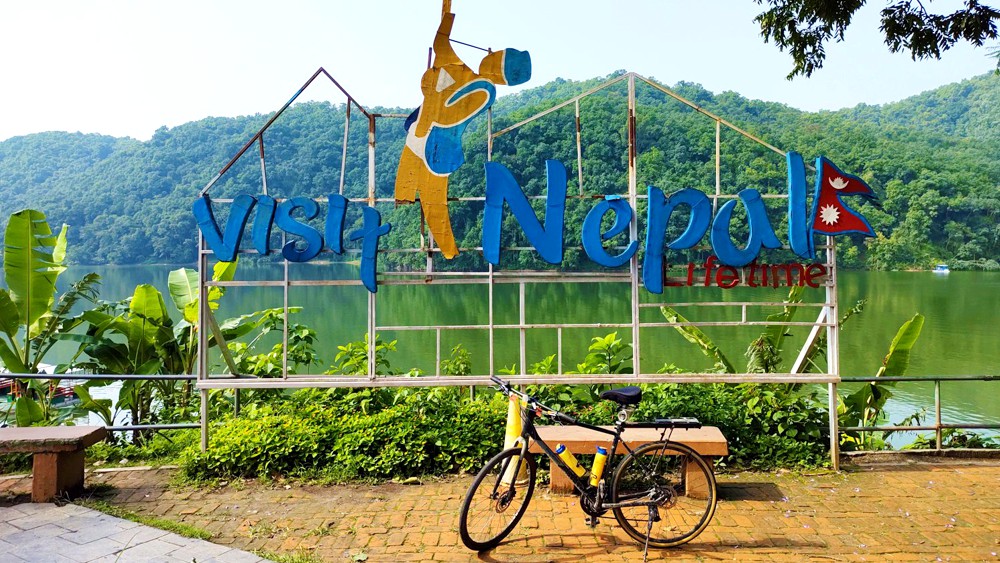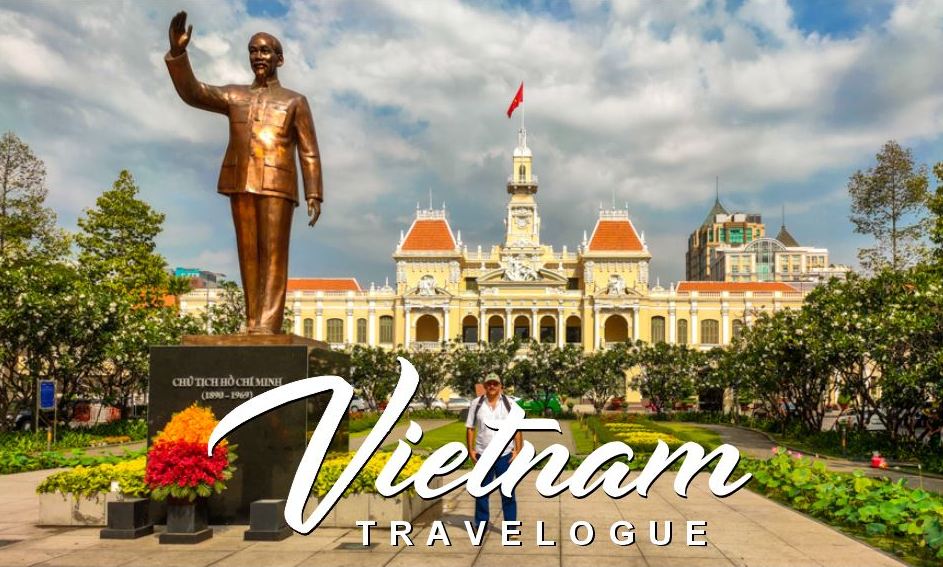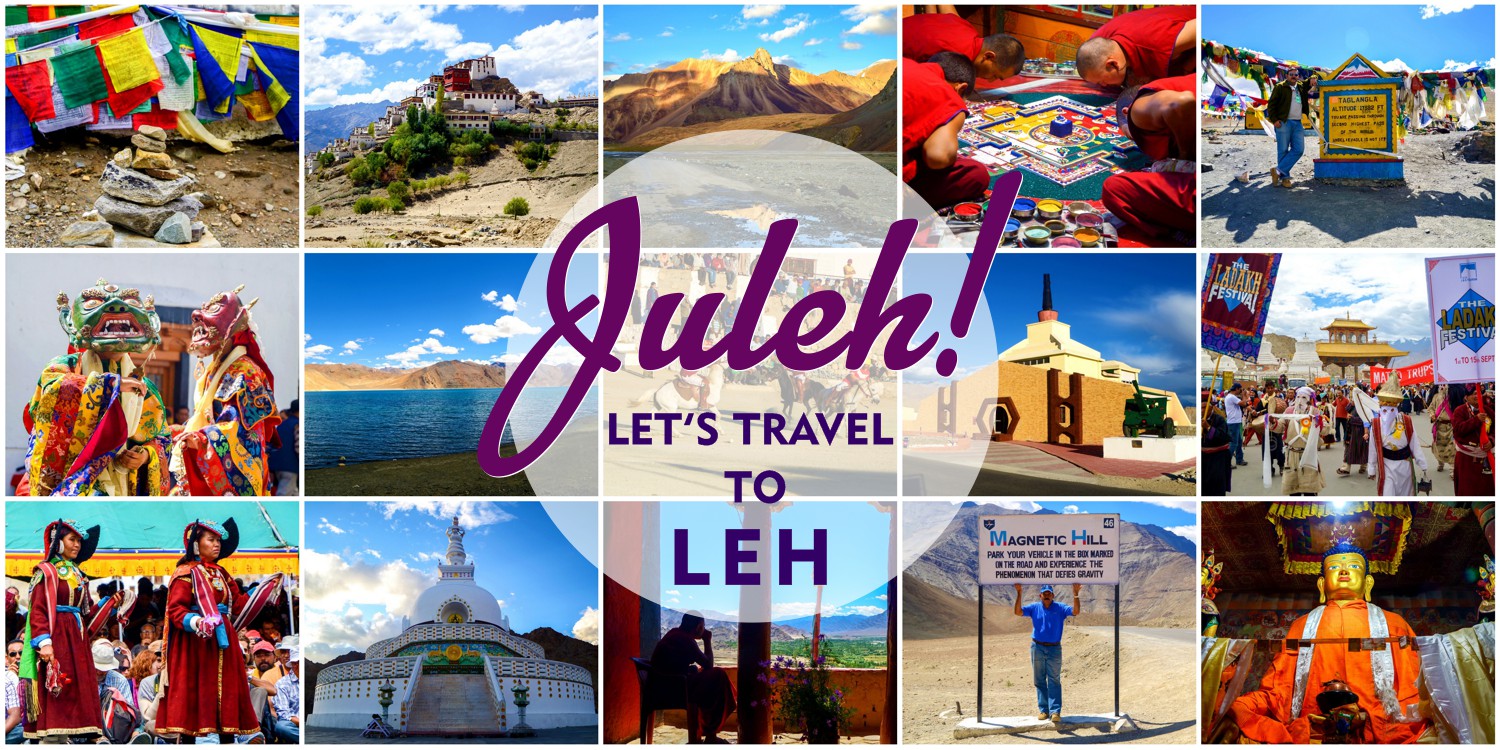
Welcome Everyone,
I’m Lynn Barreto Miranda and I will be your travel buddy to the land of the thunder dragons. Last year in September (24th to 30th) 2019, I went on a solo 7 days trip to Bhutan. Over the next 4 days I will list the places I went, the hotels I stayed and things, that will help you plan a trip to Bhutan on your own.
I’ll be keeping the history/heritage info brief, as it is easily available on the net. All photos have been clicked by me, except were mentioned.
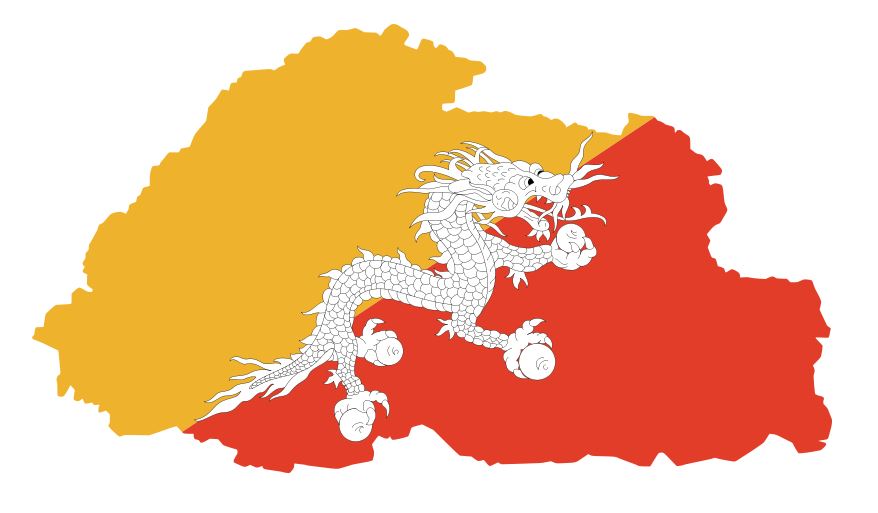
Things to keep in mind before visiting Bhutan
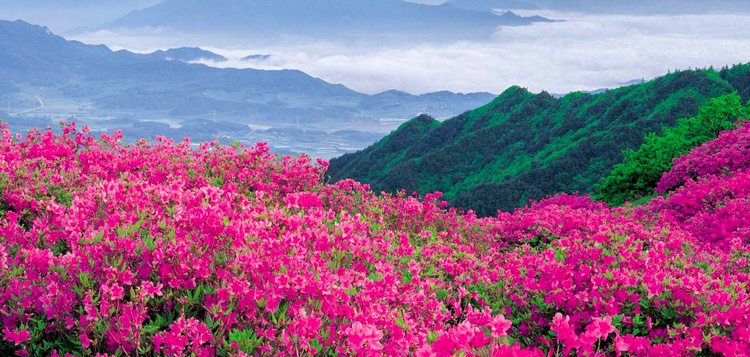
Best time to visit Bhutan is in Autumn or Spring
Autumn is from October to November when it’s generally sunny with some snow at higher elevations.
The winter season begins in December and lasts till February.
The spring months of March to May is when the famous rhododendrons bloom spectacularly, flooding the valleys with colour.
How many days needed to see Bhutan
about 6 or 7 days. More if you plan on trekking to other remote regions
Paro – 2 , Thimpu – 2, Punakha – 2
Thimpu to Phuentsholing to Bagdogra or Sikkim – 1
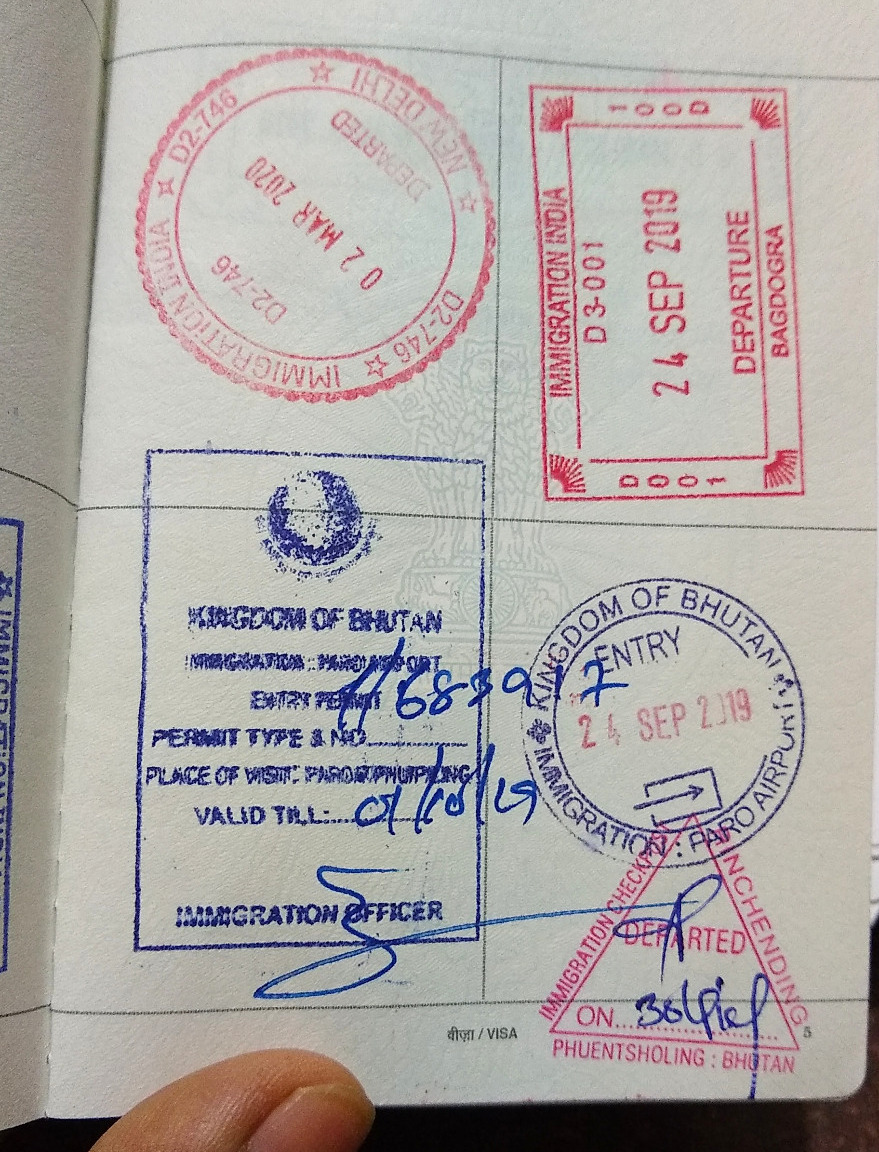
VISA & IMMIGRATION
No Visa is required to visit Bhutan.
Papers: Your passport (having validity of minimum 6 months) or election ID card and a confirmed hotel booking (one day is enough).
Going by Air: Entry permit at the Paro International Airport
Going by Road: Entry permit from Phuentsholing Immigration office
Permit is valid for Paro and Thimpu only, other places you need special permit, more about that later
Carry a few copies of your passport size photos and xerox copies of your passport, you’ll need it.
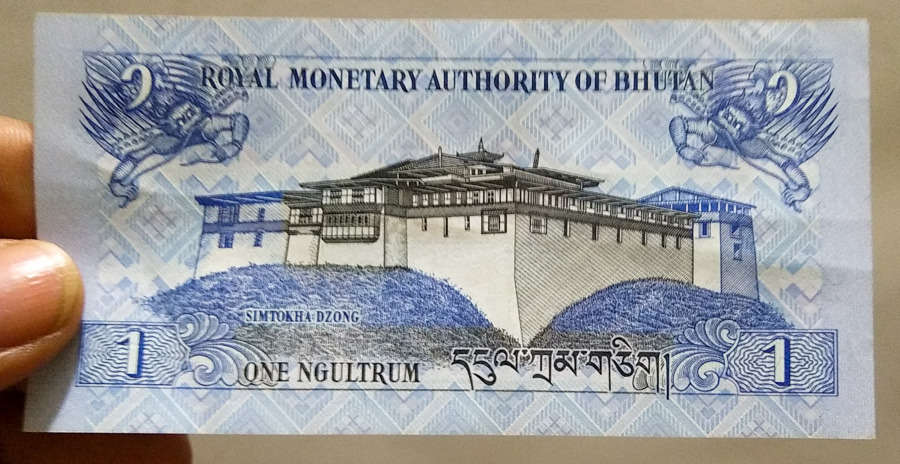
CURRENCY
Indian currency is freely accepted in Bhutan and is the same value as Bhutanese Ngultrum.
ie. Rs. 1 = 1 Ngultrum

CREDIT / DEBIT / ATM CARDS
Only Rupay cards work at ATM’s
Maximum amount you can withdraw per day is Rs. 10,000/-
Visa and Mastercard cards do not work at ATM’s
Check with you bank before you go to Bhutan

PHONE SIM
Indian SIM Cards(Airtel, Idea and Vodafone) do work in Bhutan, but you’ll have to pay for international roaming.
Incoming SMS are free.
JIO does not work.
Best is to buy a tourist local SIM (TashiCell or B-Mobile)

TOURIST TAX
From July 2020 the Bhutan govt. are planning to introduce a tourist tax of Rs. 1200/- per day.
It was free for citizens of all the 8 SAARC nations.
Presently citizens of other countries have to pay $250 per day
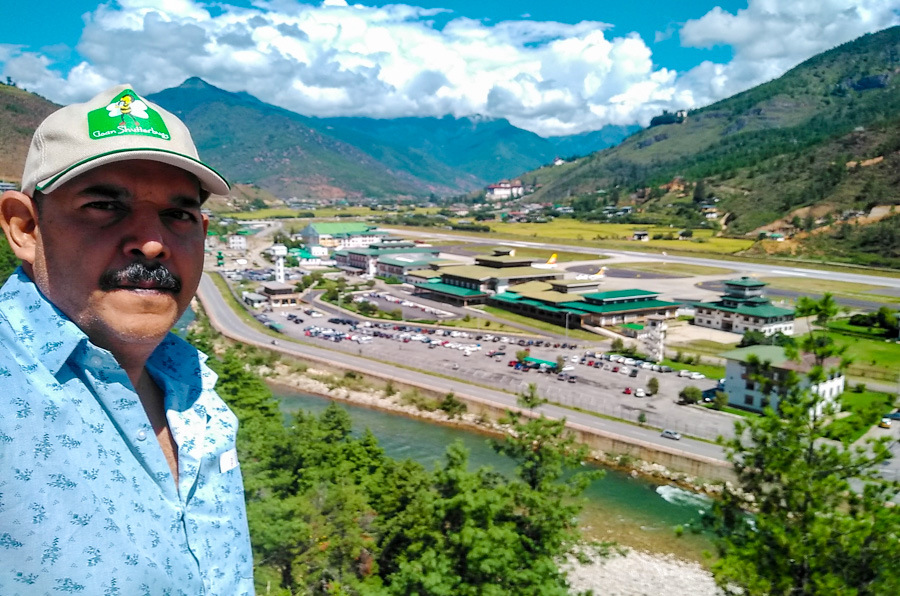
HOW TO GO TO BHUTAN
Air
Only two airlines fly into Bhutan – Druk Air & Bhutan Airlines
International Airport is at Paro
and from India you can fly to Paro from Delhi, Kolkata, Gaya, Bagdogra, Guwahati

Road
Cheaper option is taking a train from Kolkata to Siliguri/New Jalpaiguri (NJP). From there you can take a car, auto-rickshaw, shared jeep or taxi to reach Phuentsholing and then after getting your permit, proceed onwards to Bhutan – Paro or Thimpu.
The immigration office is shut on weekends and you cannot enter the rest of Bhutan and will have to remain at Phuentsholing until you get approval. The visa office has timings with a lunch break and is open from Monday – Friday (9am – 5pm)
read more: https://www.tanyakhanijow.com/blog/2019/7/16/bhutan-entry-permit-for-indians
* Above photo of India-Bhutan border gate, taken from India side. Immigration office is 100 mts ahead.

HOW I WENT TO BHUTAN
Goa > Bangalore | Bangalore > Bagdogra | Bagdogra > Paro
3 flights
Arrived in Bagdogra on 23rd Sept
Goa (dep – 2am) to Bangalore (arr – 3am)
Bangalore (dep – 5.20am) to Bagdogra (arr – 8am)
Ticket cost Rs. 6037/-
I flew to Paro from Bagdogra (Siliguri/WB) by Druk Air on 24th Sept
Dep at 7.10am and Arrival at Paro at 8.20am
Ticket cost Rs. 5894/-
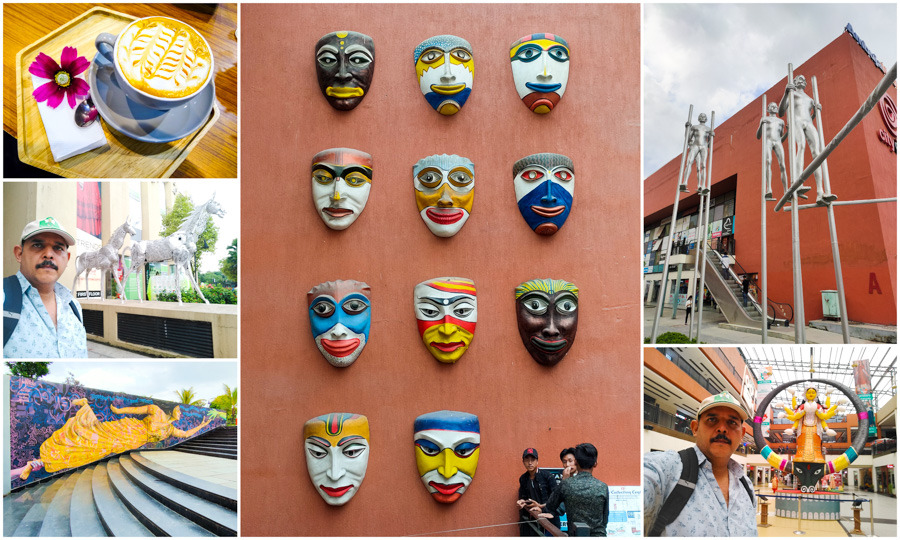
THINGS TO DO/SEE IN BAGDOGRA
There is a huge mall that you can spend half a day window shopping or just walk around Bagdogra tea gardens. Or spend transporting cars like I did.
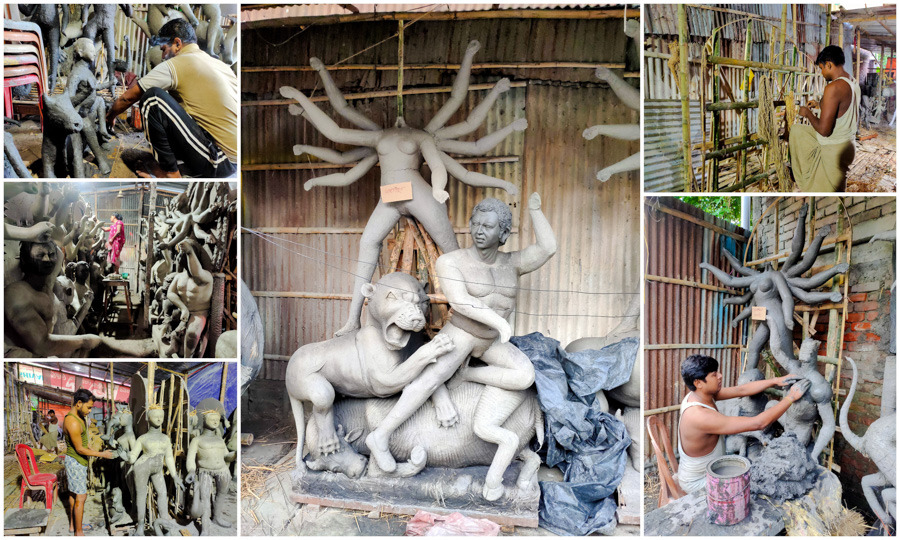
When I went in September, the Durga Puja was a few weeks away and there were many craftsman creating idols for the festival.
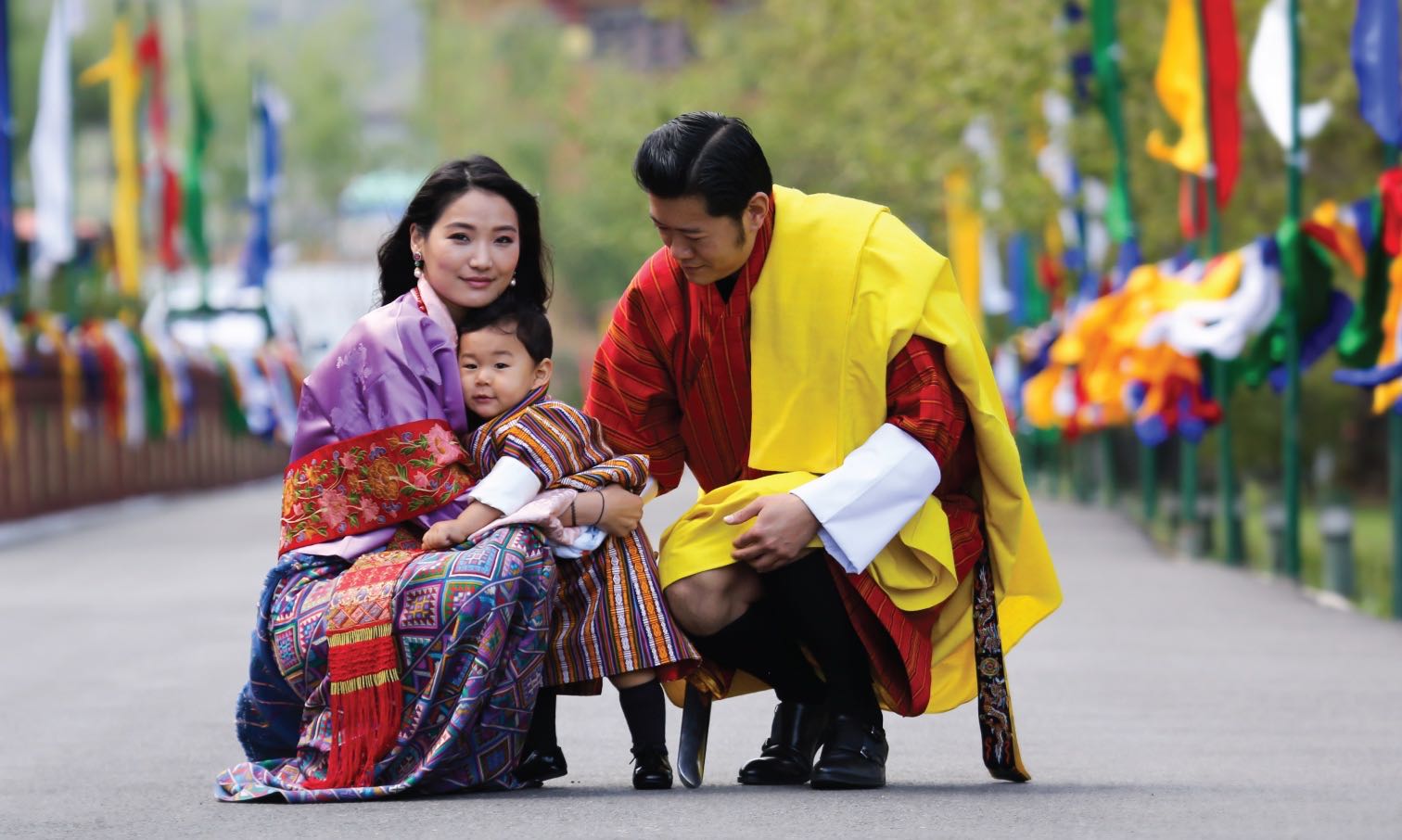
THINGS NOT TO DO IN BHUTAN
1. The people of Bhutan love and respect their king and queen above all. Each home, restaurant, shop will have a picture of the royal family. Never speak ill about the royal family to the Bhutanese.
2. You cannot smoke on the roads of Bhutan. The sale of tobacco and cigarettes is prohibited in the country. Smoking is considered extremely offensive in the country and you can only smoke in private places. Drinking is allowed.
3. You cannot smoke weed in the country and although it grows freely everywhere, you cannot smoke it. If you are caught smoking weed, you will be imprisoned for 5 years.
4. Most Dzongs (temples) will ask you to cover your arms and legs out of respect to their God.
5. You are not allowed to take photos inside temples and they are very strict about this.
6. The Bhutanese are extremely friendly and simple people and will greet you even when they pass by you on the road. Always smile back and be polite.
7. The Phallus is worshipped in Bhutan and while they understand that tourists may find this funny, they expect a certain degree of respect.
8. Lastly, the Bhutanese are extremely proud of the cleanliness and the law in their country – with good reason. Do not litter.
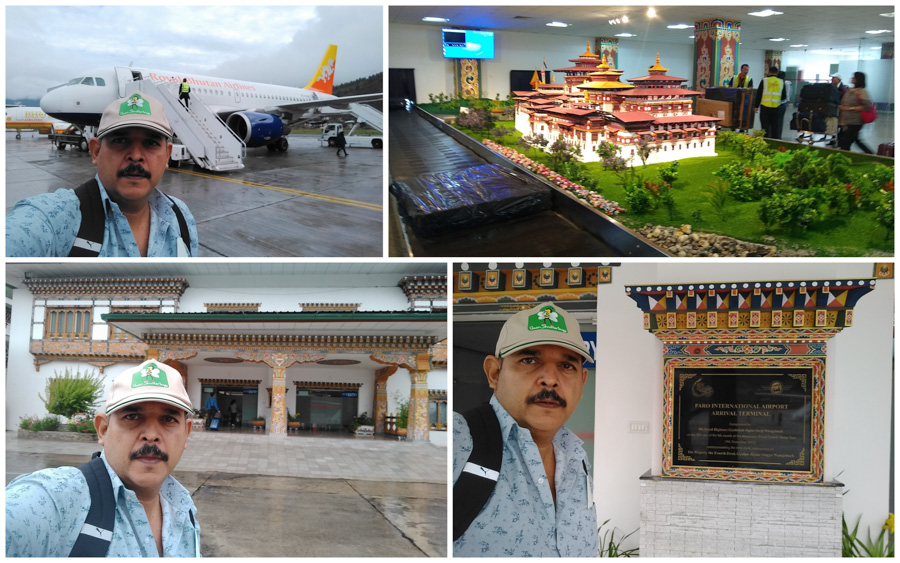
Arrived in Paro at 8.20am on 24th
Took a taxi from airport to Hotel Center Point. Cost Rs 800/- its about 7kms, or you could just walk outside the airport and stop a passing taxi, or contact one of the two drivers whose contact number’s I have shared below. There are shuttle buses to Thimphu, but none to Paro center
Also the day I arrived (24th) was a national holiday – Blessed Rainy Day
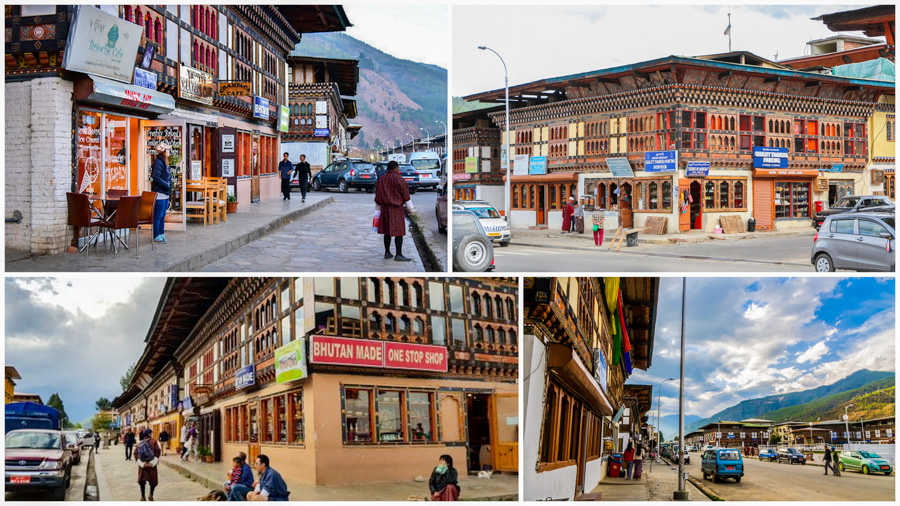
PARO
The charming town of Paro lies on the banks of the Paro (or Pa) Chhu, just a short distance northwest of the imposing Paro Dzong. The main street, only built in 1985, is lined with colourful painted wooden shops and restaurants.
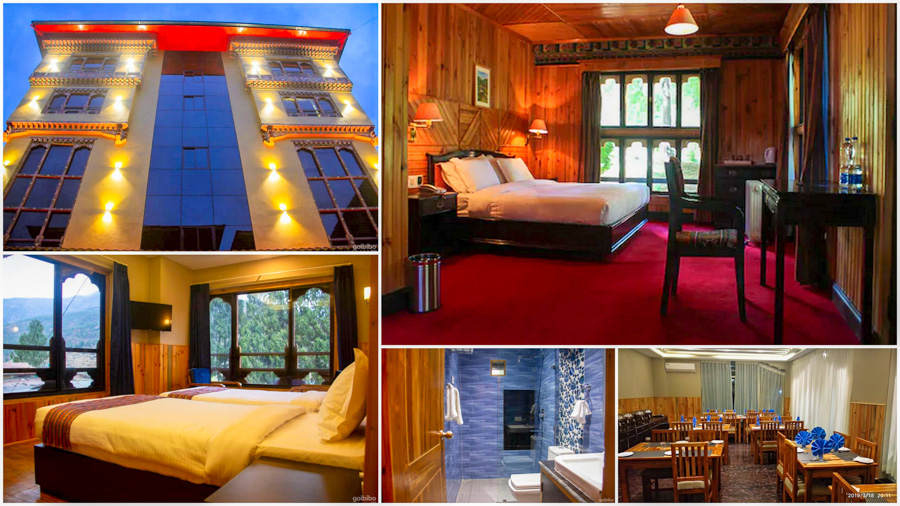
HOTEL
had booked Hotel Center Point through Goibibo, Rs 2100 per night, Excellent hotel. Clean and helpful staff.
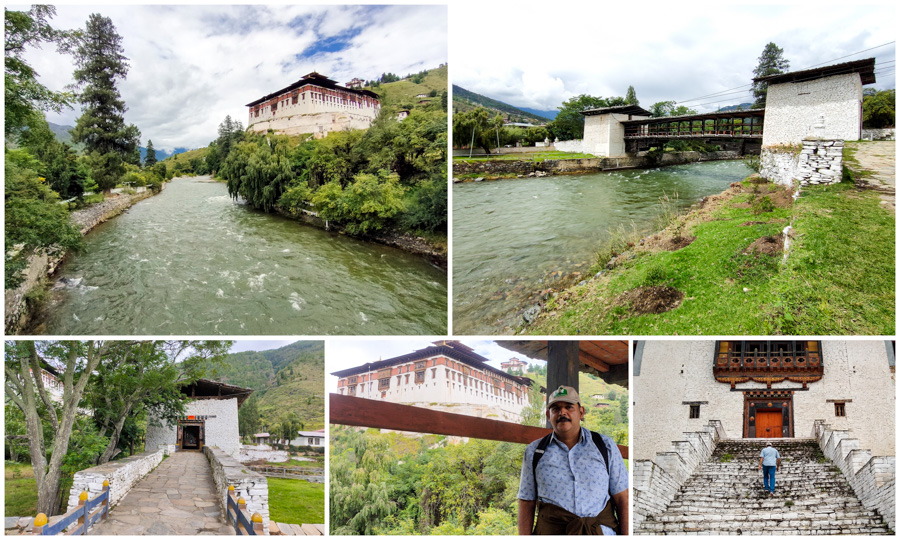
Day 1 in Paro
the Paro Rinpung Dzong (fort) was open,
but the museum which is a kilometre uphill was closed because of the national holiday
Visited the Dzong. Entry fee Rs 300 if you want to enter inside, they provide a guide
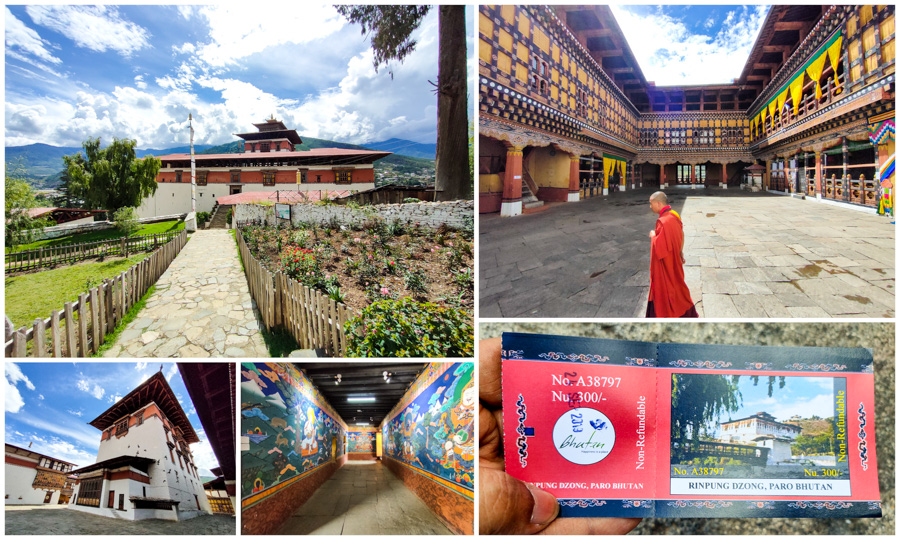
The movie Little Buddha was shot here. Part of the dzong is used as govt offices and other part as a monastery

View from the monastery window, airport is to the left, town center is to the right
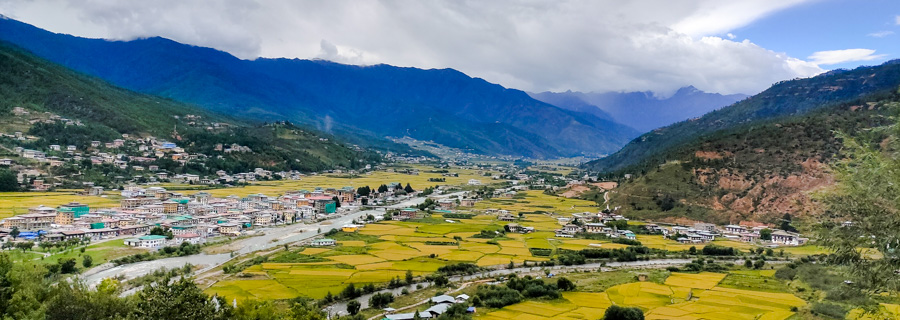
View of the town center from half way to the museum

After a tour of the dzong, went walking upto to the museum, unfortunately it was closed, but got this amazing view
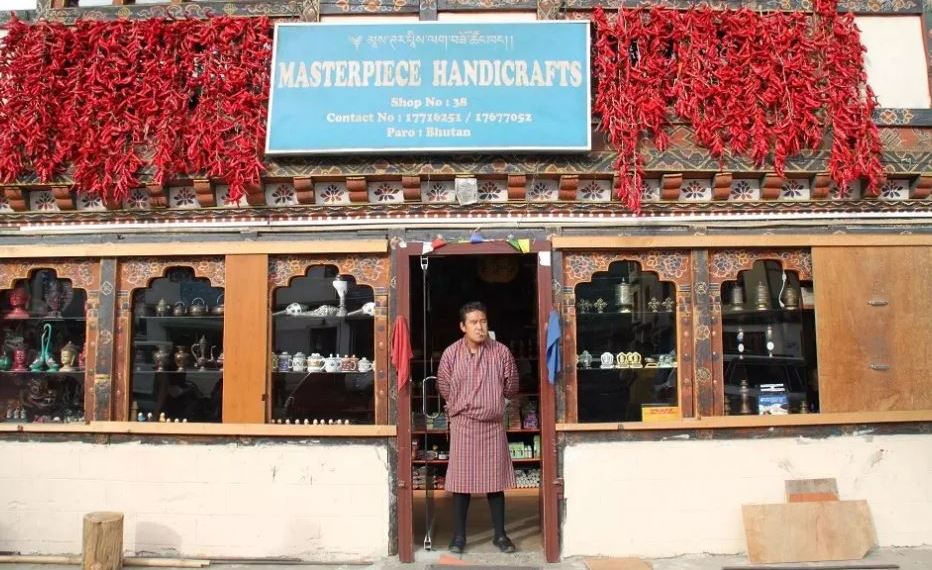
Evening was spent buying souvenirs
If you plan to buy handicrafts and souvenirs of Bhutan, buy in Paro, as the same are expensive in Thimphu. Also the same items are available at lesser price in the smaller shops and you need to bargain.
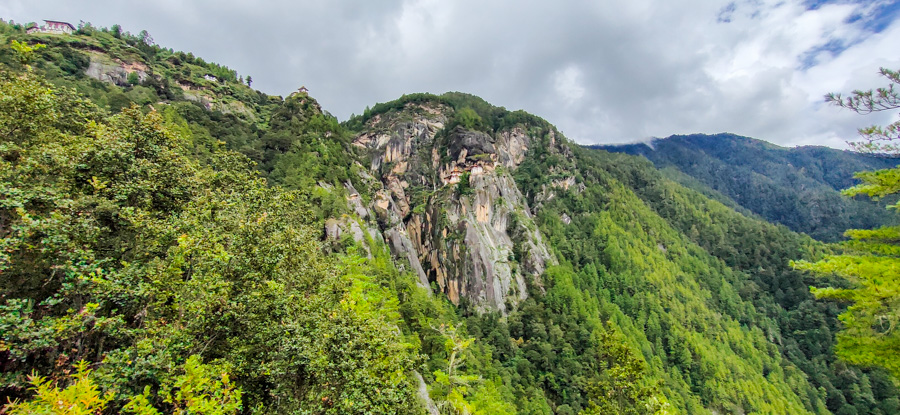
Day 2 – Paro Taktsang / Tiger’s Nest Monastery
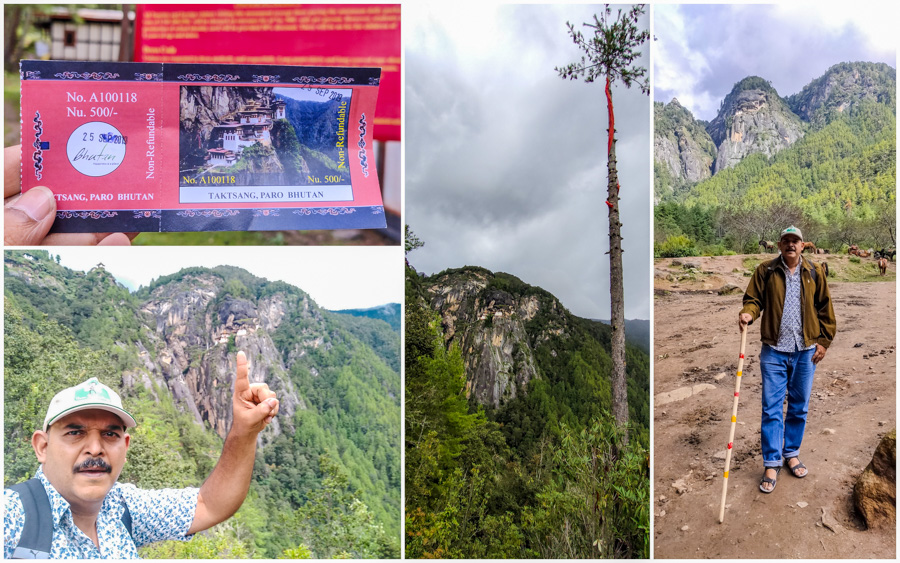
Entry fee: Rs. 500/-
ticket has to be brought from the office near the car park, they will not allow inside the monastery without a ticket.
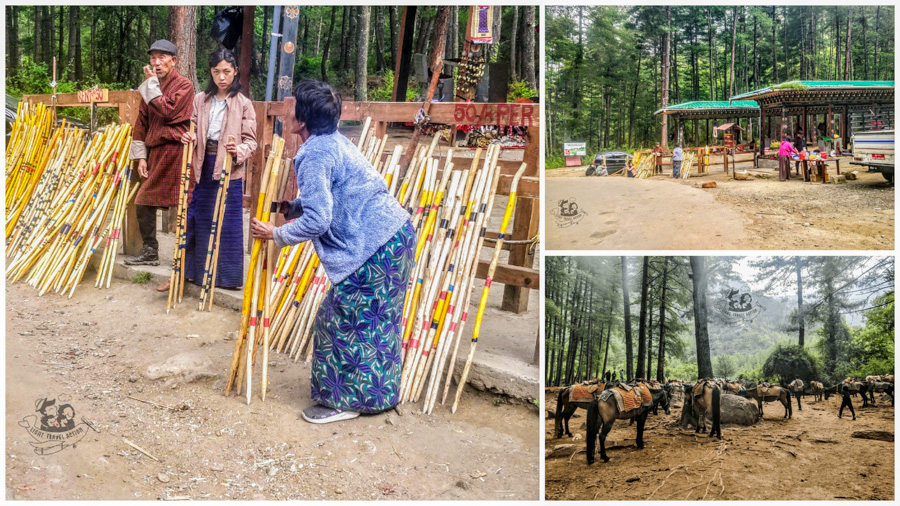
Walking stick: Rs. 50/-
Advisable to hire one, they collect it when you return.
You can take a horse up and down up to a certain point but beyond that, you have to trek to the top.
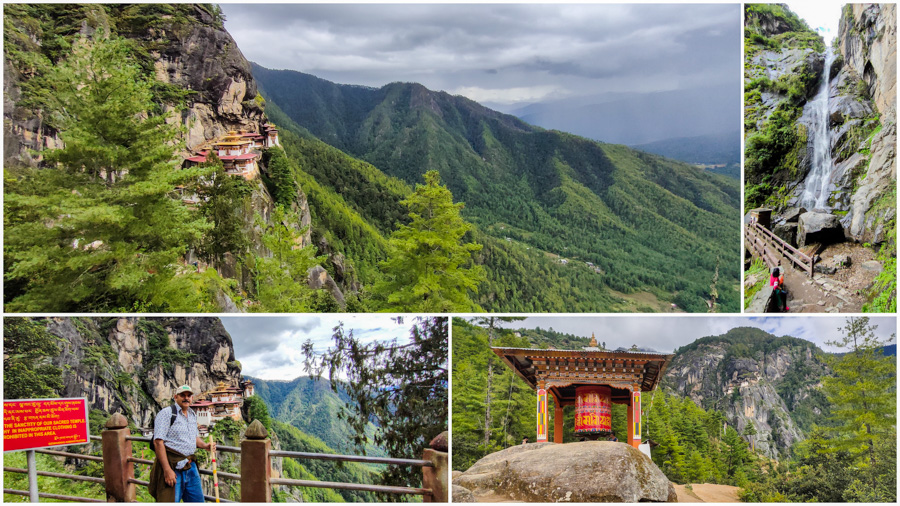
Paro Taktsang / Tiger’s Nest Monastery
There are no real roads that go up to the top and just a path that has been formed by constant walking. The last mile of the trek has stairs..
7kms walk uphill, elevating to 10,150 feet, 450 steps down, 250 steps up and same route down, took me 5.45 hours.
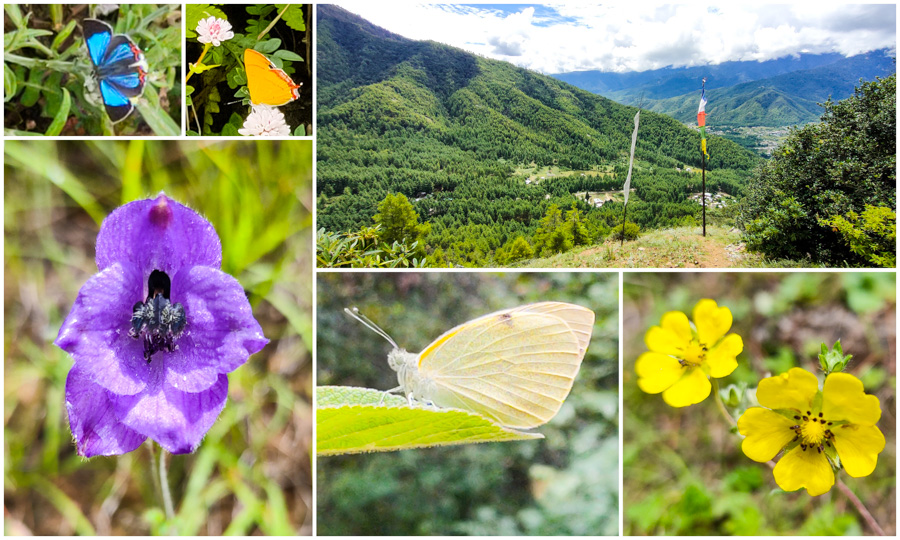
The steep elevation of the trek is what really tires you, so make sure you space it out. Enjoy the nature as you climb up.
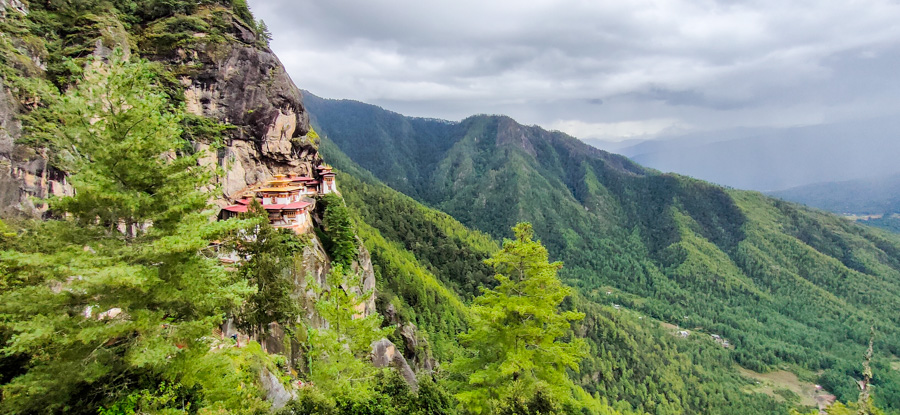
Taxi: Rs 800/-
they will drop you and come to pick you up when you return, its about 12kms / 30 minutes from Paro center.
Advisable to start early.
Also carry water and some eatables (biscuits/sandwiches)
Only one restaurant half way up, they have buffet veg lunch only, for Rs. 500/-
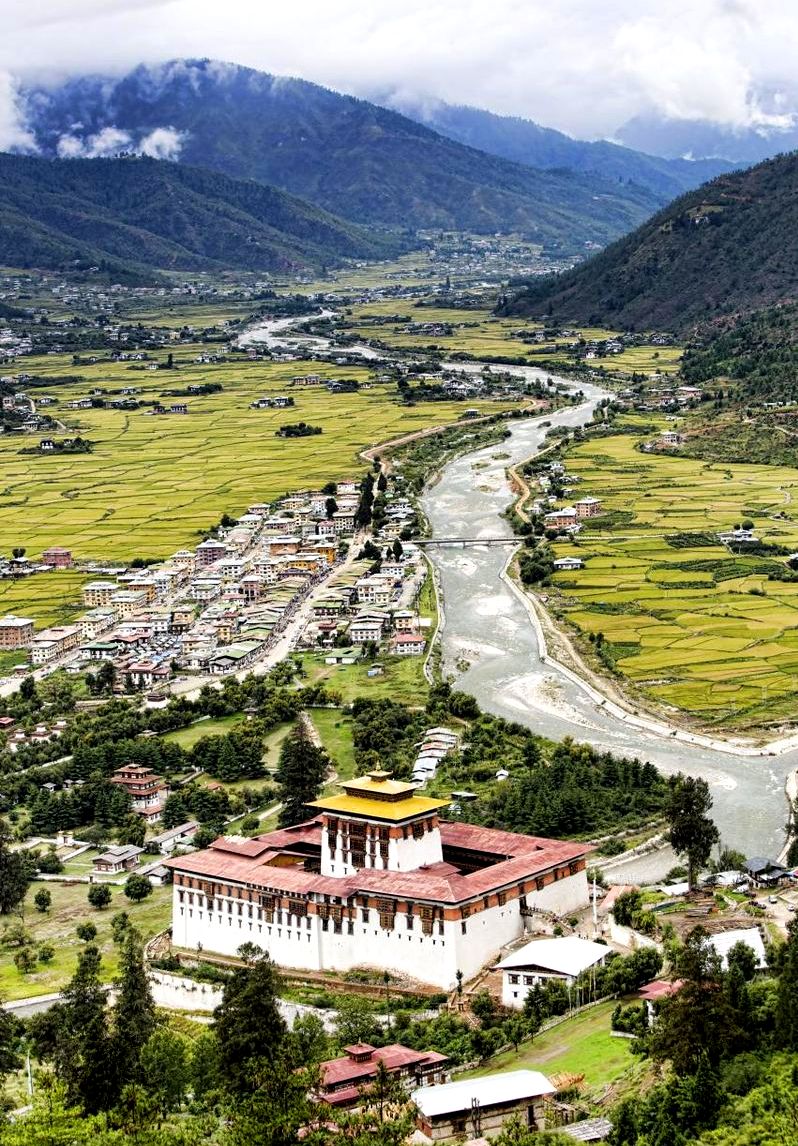
Day 3 : Paro
Hired a taxi for Rs 3000/-
Went to see:
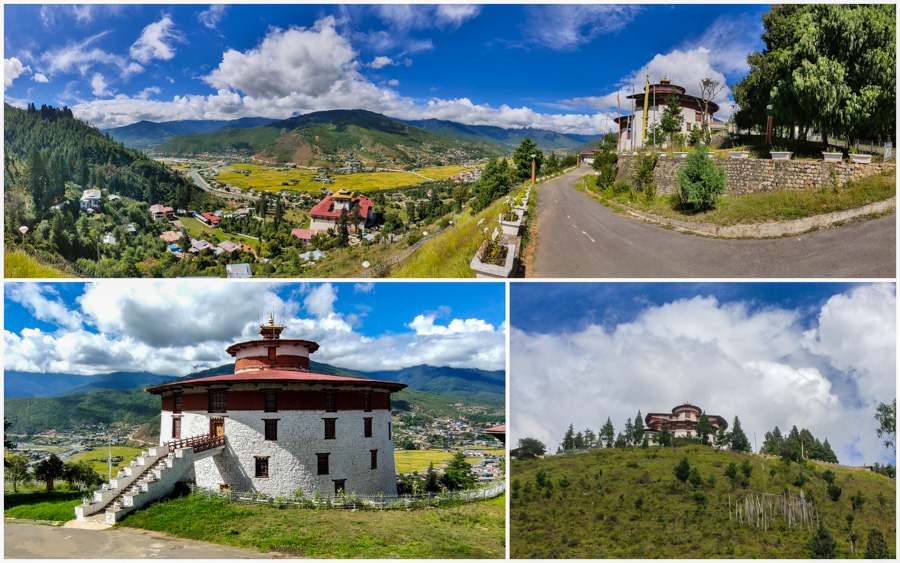
1. National Museum – Entry fee: Rs. 50/-
that’s the old museum building, it was damaged during an earthquake few years back
they have shifted all the stuff to a new building just above
to the left in the top pic is the airport
bottom right pic is clicked from the dzong
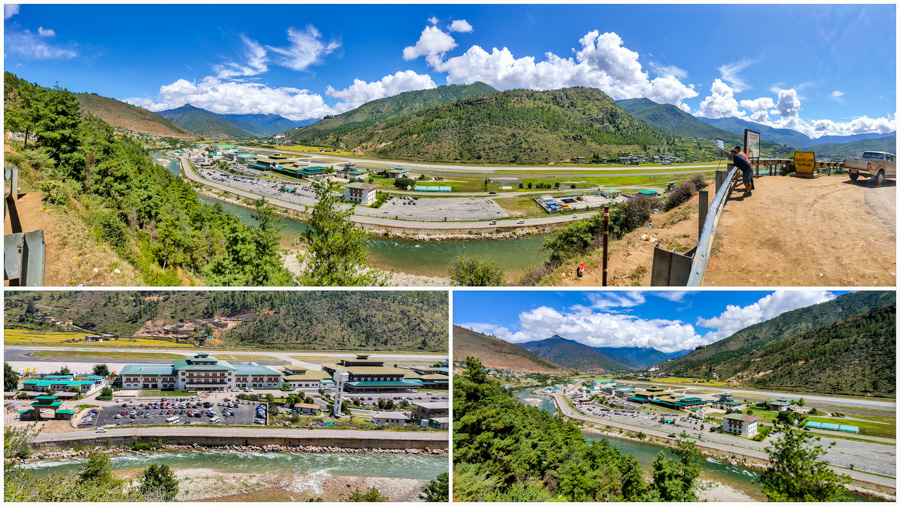
2. Airport Viewing Point
you get a bird’s eye view of the airport and also might catch a plane landing or departing
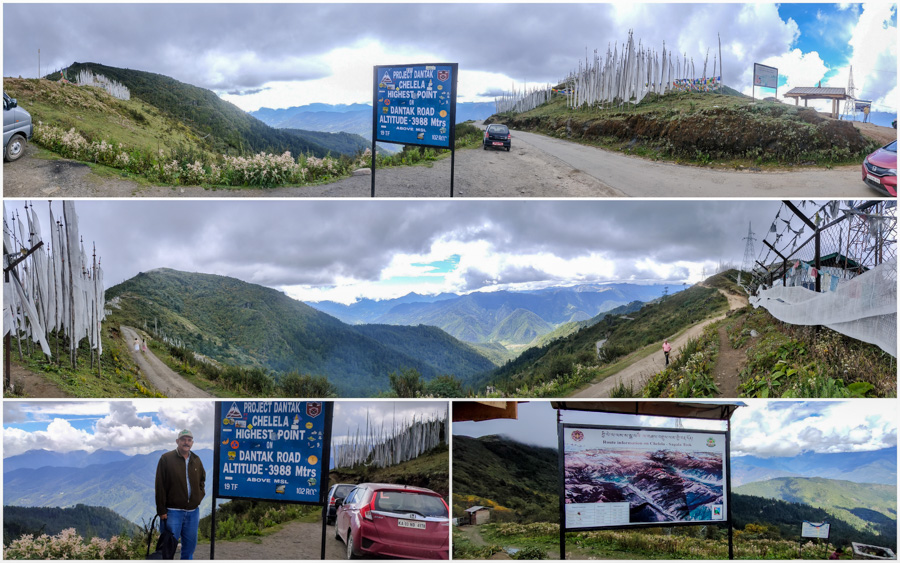
3. Chelela Pass
Chelela separates Haa and Paro valleys and at 3810m, it is one of the highest motorable road.
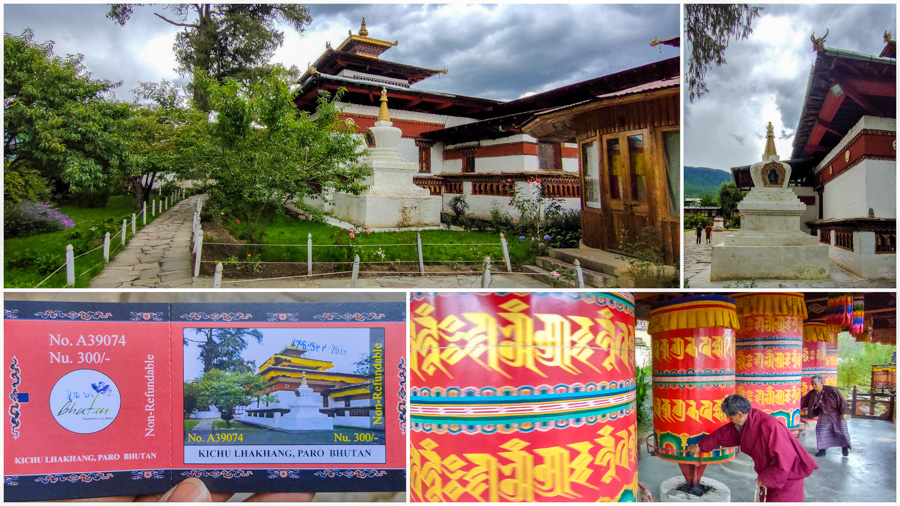
4. Kichu Lhakhang Monastery – Entry fee: Rs. 300/-
It started raining heavily so had to skip couple of other tourist points
You can skip Chelela Pass and Kichu Lhakhang Monastery – nothing great
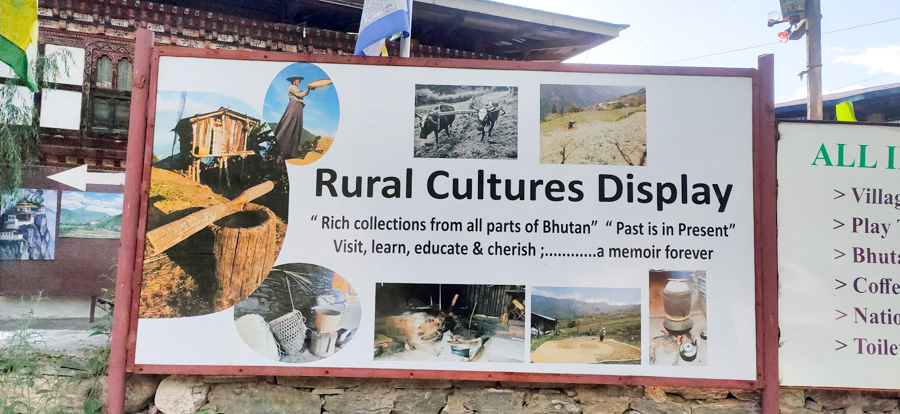
THE RURAL CULTURAL DISPLAY
situated opposite the entrance of Paro Dzong, it is a small museum started by a retired army officer Mr. Tshering ph: 17650212
It’s something like Goa Chitra but smaller in size as he has just started it. He take immense pride in explaining each artefact. Entry fee: Rs. 200/-
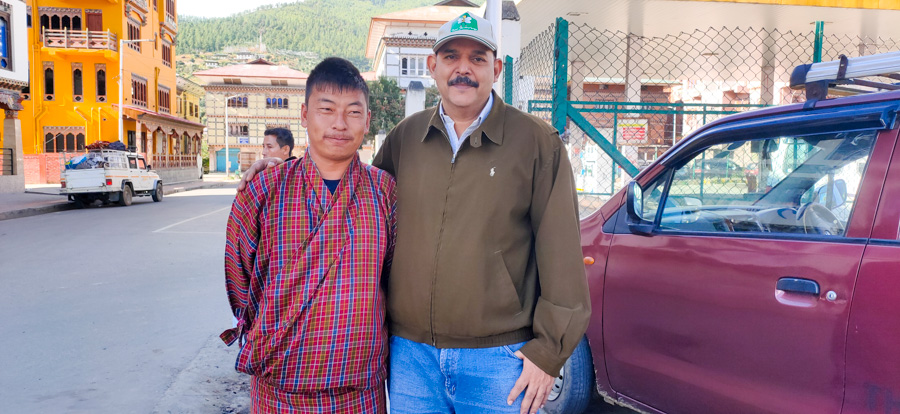
Taxi Driver: Kumbu ph: 17431372
he took me to Tiger’s Nest Monastery and around Paro.

Paro is a small place, along the main road are a handicraft and souvenir shops and the restaurants.
You can walk around within 2 kms. Cheaper hotels are available too, range from Rs 1000 to 1500.
There are around 10/12 hotels within a range of 1.5kms. And there are some homestays too.

THINGS TO SEE IN PARO – MY SUGGESTION
1. Paro Dzong
2. National Museum
3. Airport Viewing Point
4. Paro Taktsang / Tiger’s Nest Monastery
others can be skipped

Let’s go to Thimpu and Punakha now
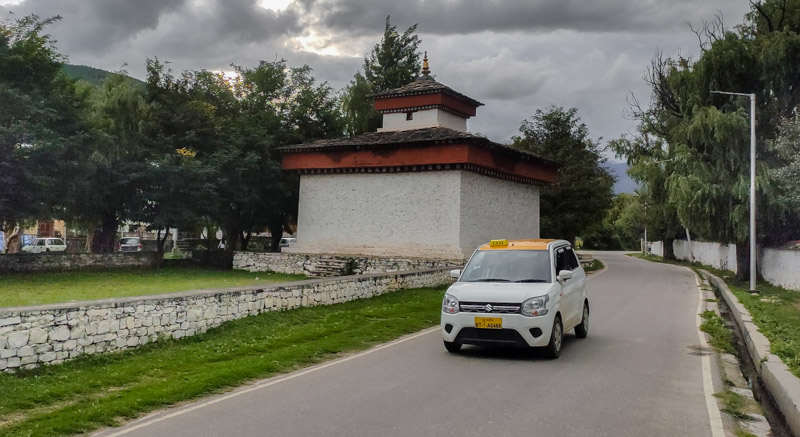
Day 4 : Paro to Thimpu (approx 1 hour distance)
Hired a taxi for Rs 1000/- reserved
Taxi Driver: Ugyen Chophyel ph: 17732468
Speaks fluent English and knowledgeable of Bhutan’s history and heritage
Shared taxi available too for Rs. 200/- per person. they will leave only after they get 4 passengers and will not stop along the way if you wish to click photo or stop to see something
TIP: Leave early from Paro, so you get the whole day in Thimphu
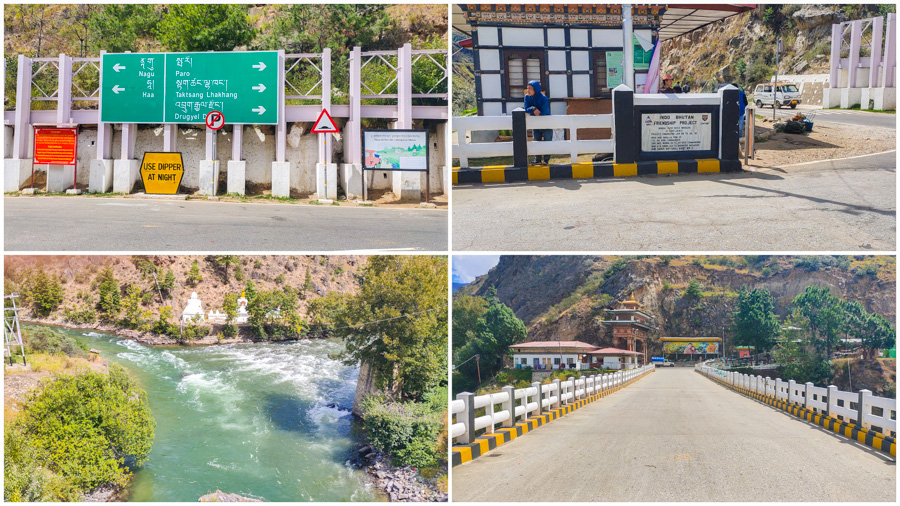
Chhuzom Bridge
Most of the roads and bridges are built by India.
BL: Confluence of ‘Pa Chu’ river flowing from Paro valley and river ‘Wangchu’ flowing from Thimphu; and the river flows to the Chukha district.
BR: Main gate entrance to the capital of Bhutan, Thimphu.
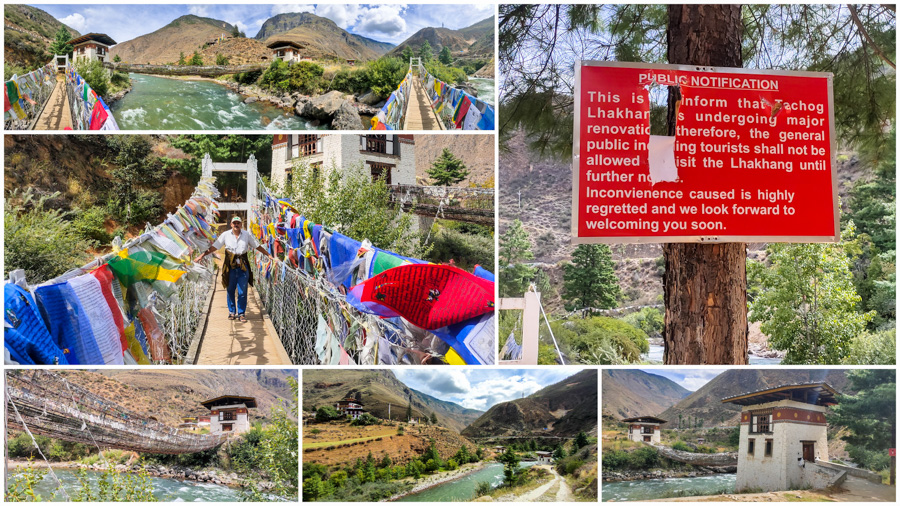
On the way stopped at Tachog Lhakhang bridge
It was built in the early 15th century by the great iron bridge builder and Poet – Yogi Thangtong Gyalpo(1385-1464), who also built many iron bridges throughout Bhutan and Tibet.

Reached Thimpu at 12.30
Went to the immigration office to get permit to visit Punakha
At the airport, permit is only given for Paro and Thimpu. Process take 2 hours, so you have to come back to collect it. A xerox copy of your passport with the Bhutan arrival stamp is needed, there is a xerox shop next door and you have to fill a form that you collect from the office
Note: All govt office are closed on Saturday, Sunday and national holidays

Checked into Hotel Chophel Norkyi
Its opposite Clock Tower. It was booked for me by a friend. Cost Rs 1850/-, rooms are okay, bathroom are old, for bathing hot water had to be collected in bucket as the shower was not working properly. No lift, no wifi. Centrally located so ideal. You can get better hotel around in the range of Rs 2500/-
TL: Thimpu entry gate
TR: Clock Tower (Thimpu’s landmark and the center point)
BL: View from the hotel (the clock tower is between the trees to the left, the little blue patch)
BR: Hotel Chophel Norkyi (middle bldg, the room with the open window, top floor, is were i was staying)
Hired Ugyen Chophyel to take me around Thimpu too
Cost: Rs 1500/-
Went to see the:
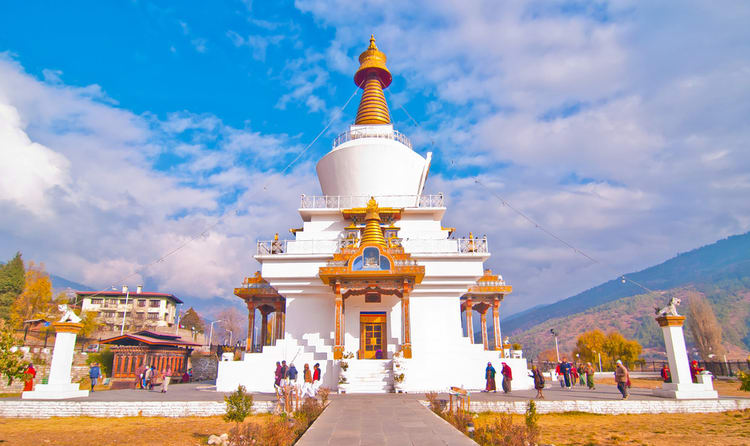
1. Memorial Chorten – Rs. 300/-
The gorgeous white monument was built in memory of Third Druk Gyalpo and is dedicated to World Peace.
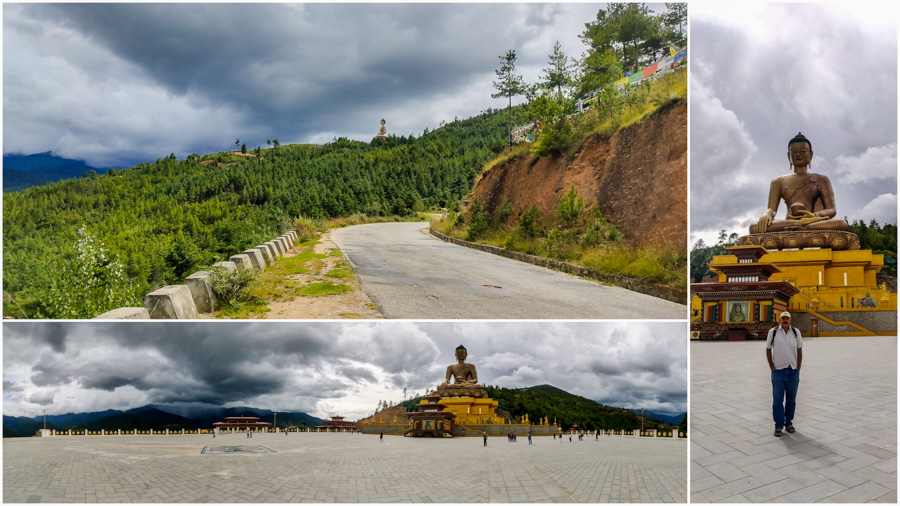
2. Buddha Dordenma – free entry
A 10-minute drive from the Chorten is Buddha Dordenma, which is a gigantic 177 ft Shakyamuni Buddha statue in the mountains of Bhutan. The view from the top is absolutely stunning and overlooks all of Thimpu.
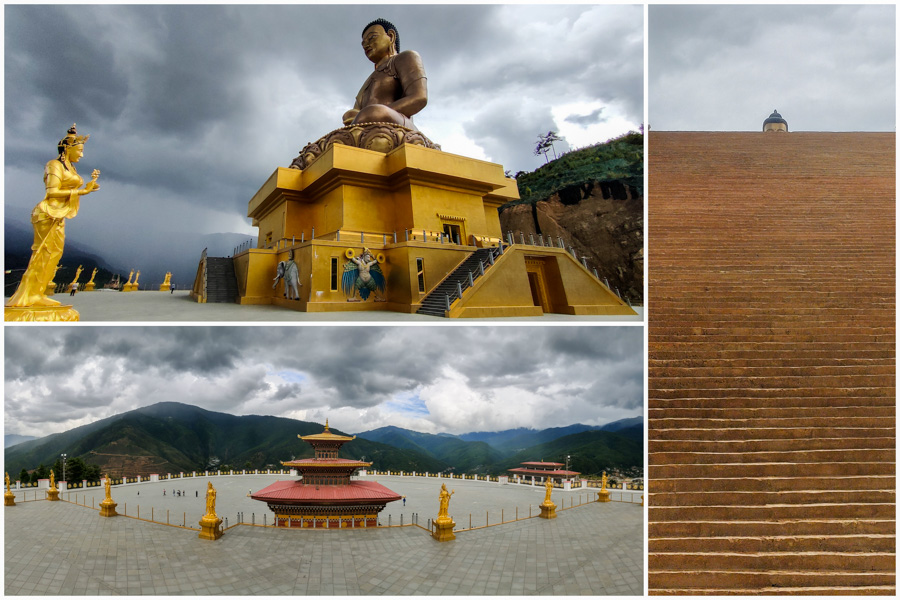
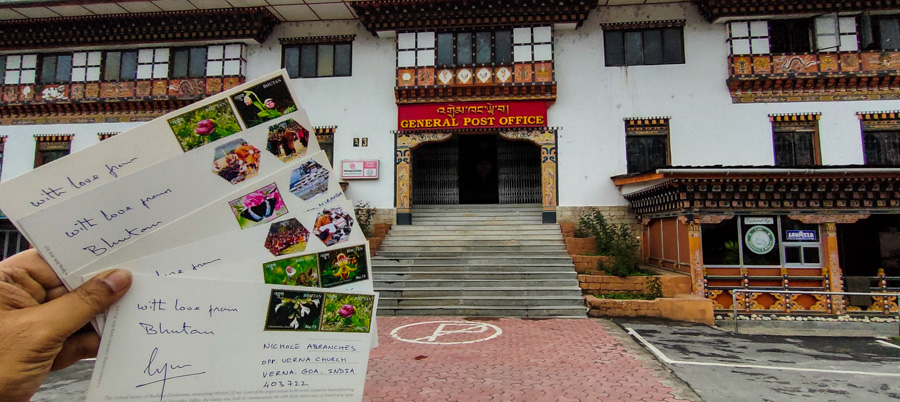
3. Bhutan Post Office
Posted seven postcards, received only four……….. still waiting for the other three
At the Post Office is a museum that has display of their postal history – entry Rs. 150/-
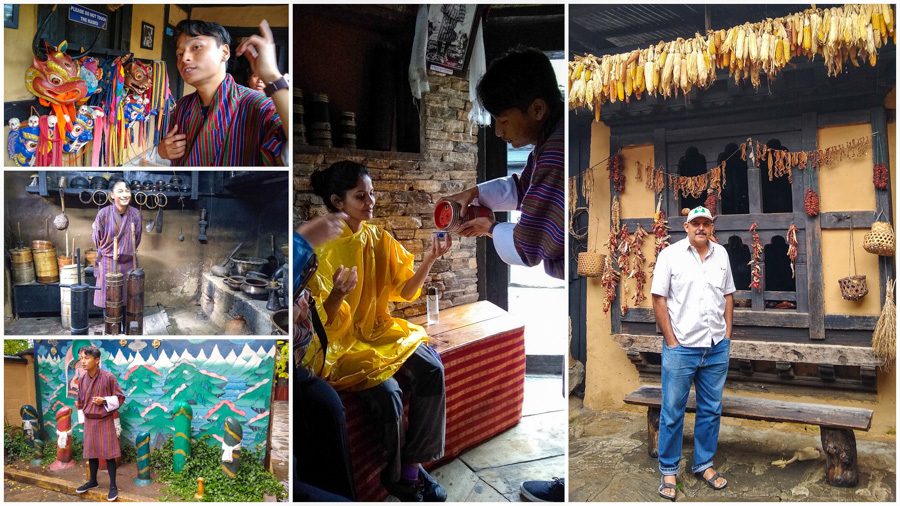
4. Simply Bhutan Museum – Rs. 200/-
Simply Bhutan is a living museum which gives the tourists a taste of Bhutanese lifestyle. You get to dress up, drink arak, try your hand at archery – in short everything that the natives do.
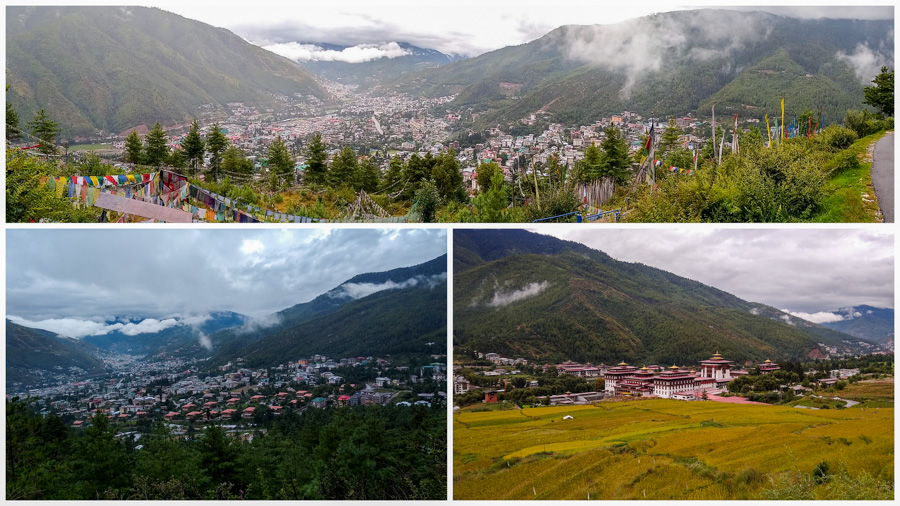
View from the near the TV tower
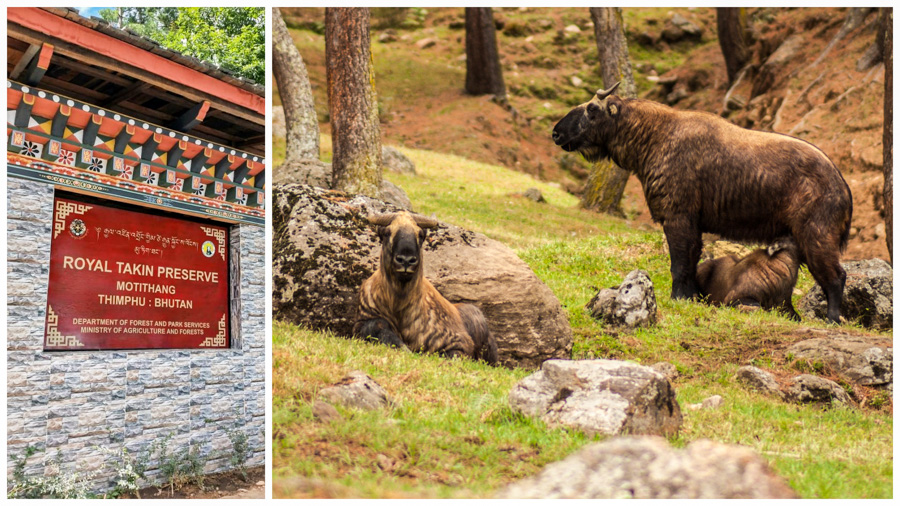
Motithang Preserve Zoo – did not go see as it had started raining. Takin is Bhutan’s national animal.
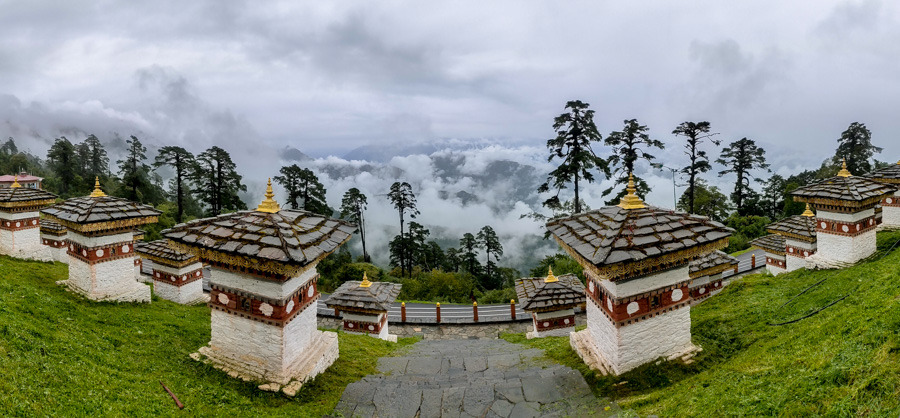
Day 5 : Punakha
Hired Ugyen Chophyel to take me to Punakha
Cost: Rs 2500/-
left at 9am from Thimpu and were back at 5pm
Plan was to stay there for a night and do river rafting, but the weather and water was too cold, so skipped the idea. The distance between Thimphu and Punakha is not long, only about 85 km. However, since you are driving up and over a mountain pass on incredibly windy roads, this journey can take a long time. For us, it took over 3 hours to go this distance, with a stop at Dochula Pass
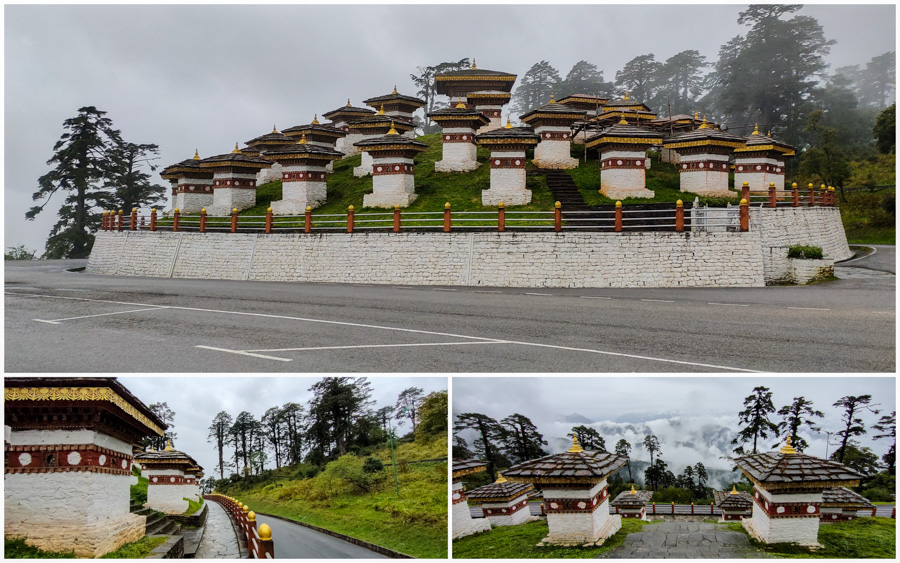
Dochula Pass
The pass offers an amazing 360-degree panoramic view of the Himalayas on a clear day. The pass is also famous for the 108 memorial chortens or stupas known as “Druk Wangyal Chortens” that is located on the top of the pass. These were built as memorial in honour of the 108 Bhutanese soldiers who were killed in the December 2003 military operation with the ULFA.
These chortens were in the news last October (2019) after a stupid Indian motobike rider climbed on one of them
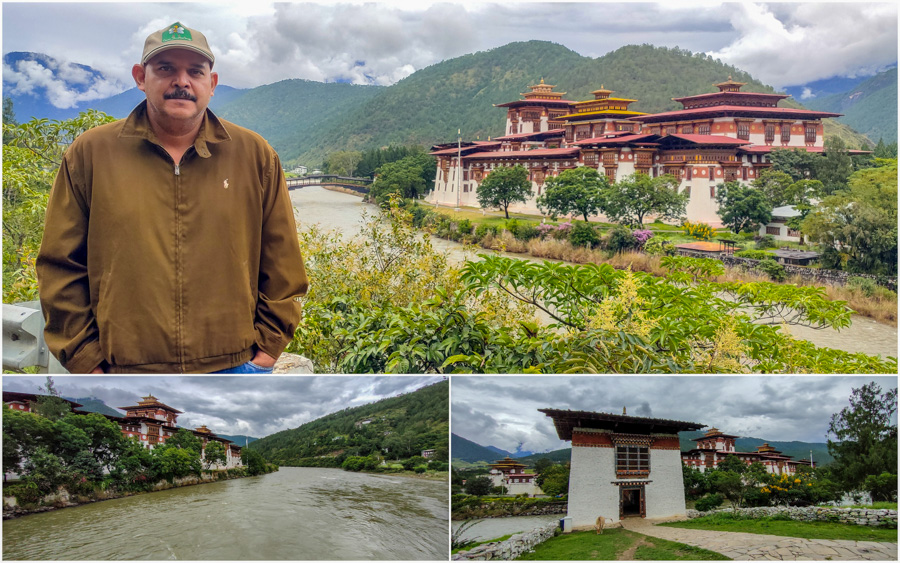
Punakha Dzong – entry fee : Rs 300/-
Pungtang Dewa Chhenbi Phodrang commonly known as Punakha Dzong, in the native language it means the “Palace of Great Bliss”. Built in 1637-38 it is the 2nd oldest and 2nd largest Dzong in Bhutan. It is present administrative seat of the district and also the winter residence of the central monastic body.
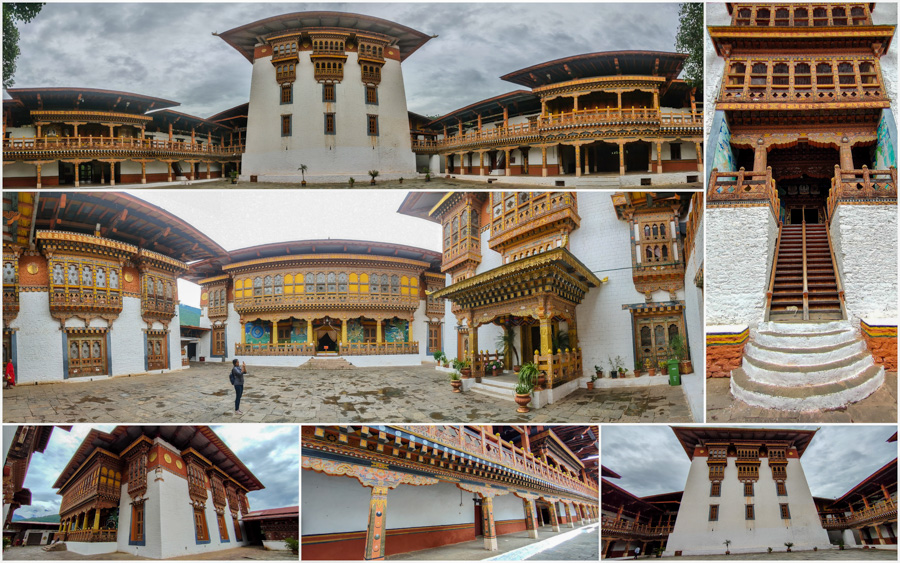
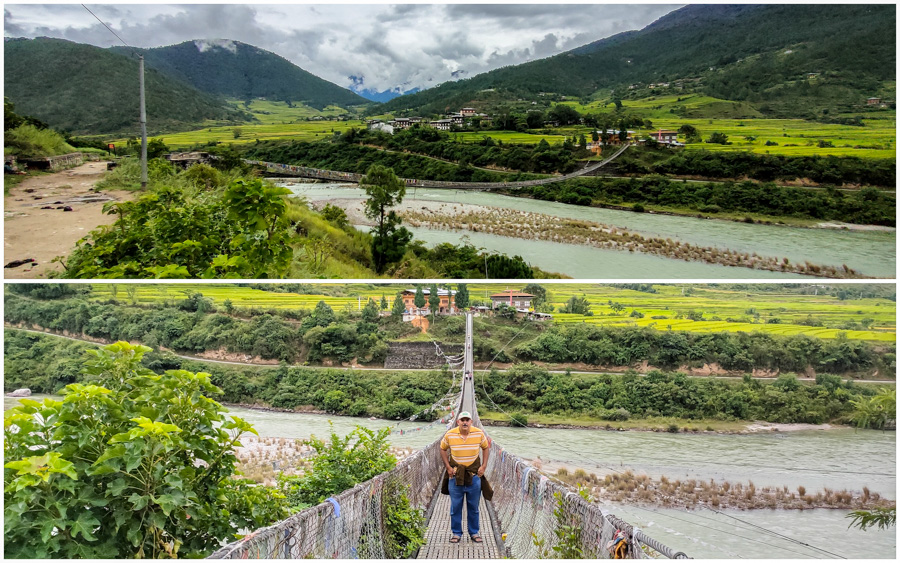
Punakha Suspension Bridge
its a 30 minute walk from the dzong – did not find interesting.
The bridge is one of the longest suspension bridge in Bhutan, spanning 160m and perched high above the very swift river of Po Chhu. Draped with prayer flags, the bridge connects the town of Punakha and the Punakha Dzong, mainly used by locals from the other side of the town.

Confluence of the Pochu (male) and the Mochu (female) rivers
The Punakha Dzong is situated along the banks of Mo Chuu and Po Chuu rivers.
The source of the Mo chu river is in the northern hills of Lighsi and Laya in Bhutan, and in Tibet. The Po Chu River is fed by glaciers in the Lunana region of the Punakha valley. After the confluence of these two rivers, the main river is known as Puna Tsang chu or Sankosh River and flows down through Wangdue Phodrang, crosses the Bhutan–India border at Kalikhola and eventually meets the Brahmaputra River.
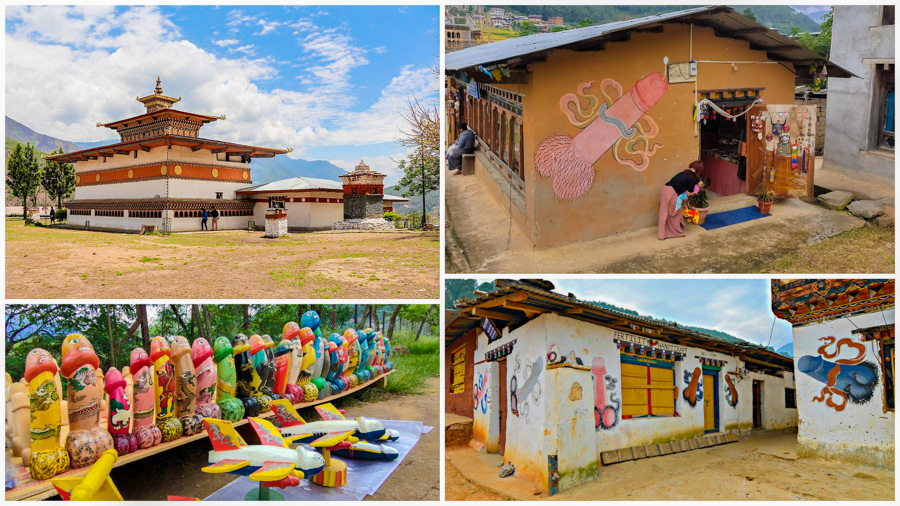
Chimi Lhakhang, the temple of ‘divine madman’
is the repository of the original wooden symbol of phallus that Lama Kunley brought from Tibet. This wooden phallus is used to bless people who visit the monastery on pilgrimage, particularly women seeking blessings to beget children.
The houses in the village are filled with phallic paintings and every handicraft shop have phallic of different shapes and sizes on sale.
Traditionally symbols of a phallus in Bhutan have been intended to drive away the evil eye and malicious gossip.
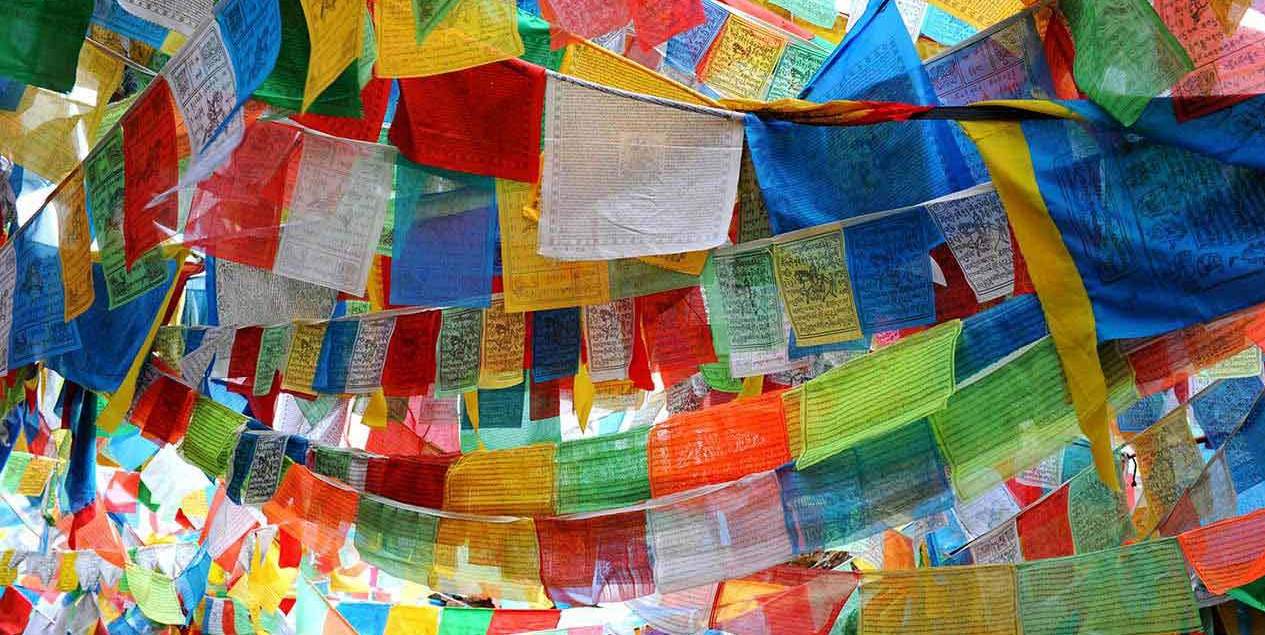
Day 6 (Sunday) in Thimphu
Went to see – walking
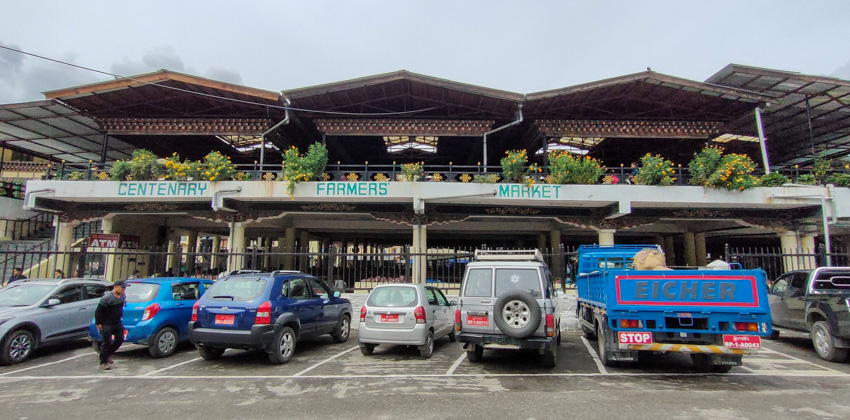
1. Centenary Farmers Market

2. Handicraft Market – its opposite the Farmer’s Market across the river
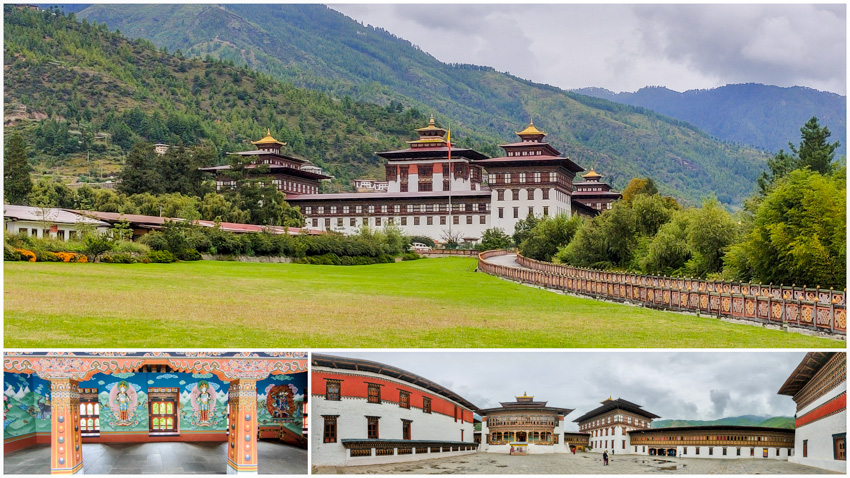
3. Thimphu’s Trashichhoe Dzong – entry fee : Rs 300/-
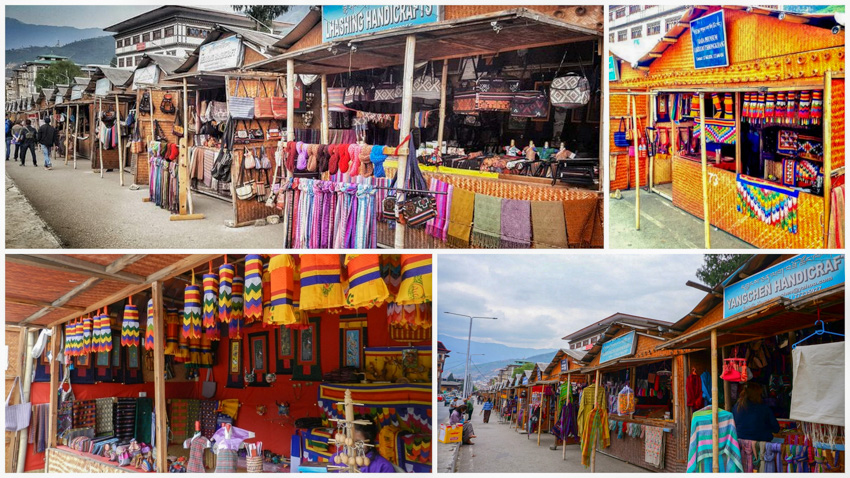
4. Women’s Handicraft Stalls
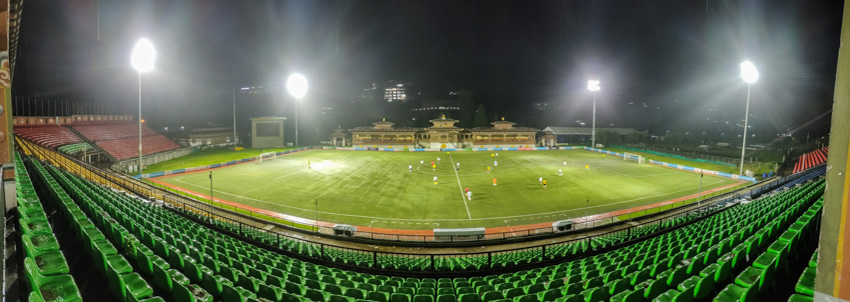
5. Football stadium
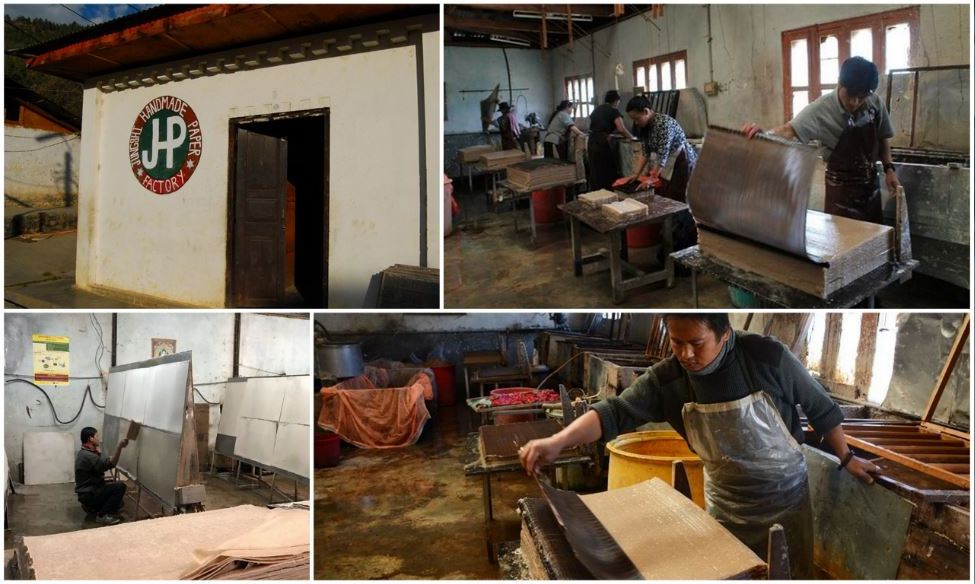
Jungshi Handmade Paper Factory – missed it as it was closed on Sunday
There are few other places of interest, like the National Library of Bhutan, Textile Museum and the National Institute for Zorig Chusum
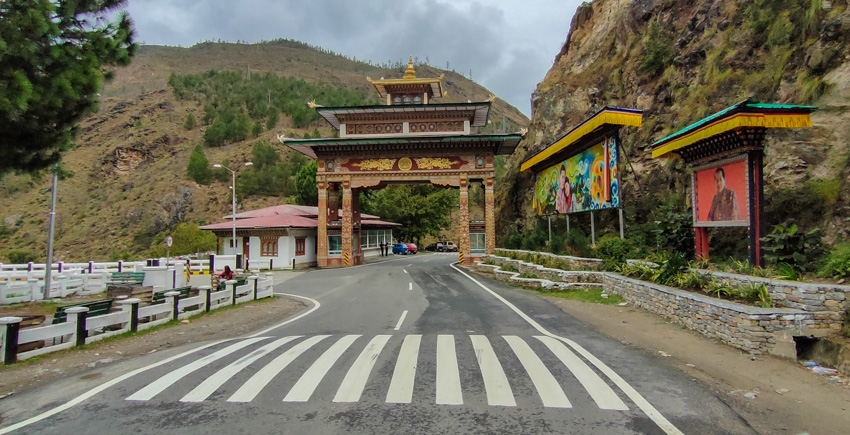
Day 7 : Thimphu to Phuentsholing
Shared taxi: Rs 750/-
Driving time: 4 hours (depends on the weather, half of the journey it was raining and foggy)
Reached Phuentsholing around 2pm, the driver wasted over 2 hours picking passengers at the start
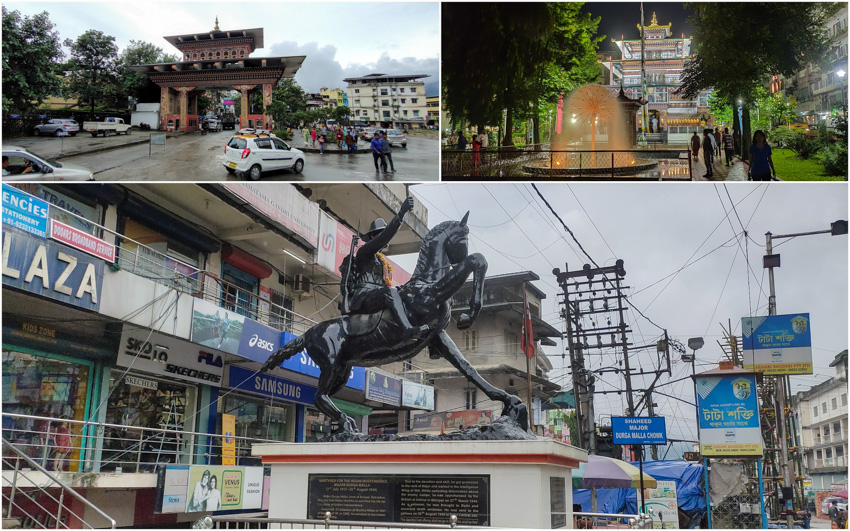
Stayed at Hotel Raven – Rs 1650/-
Did not go around Phuentsholing much as it was raining
TL: Border gate from Bhutan side | TR: Zangto Pelri Lhakhang
Bot: Statue of Major Durga Malla (martyred for India’s Independence in Jaigaon)
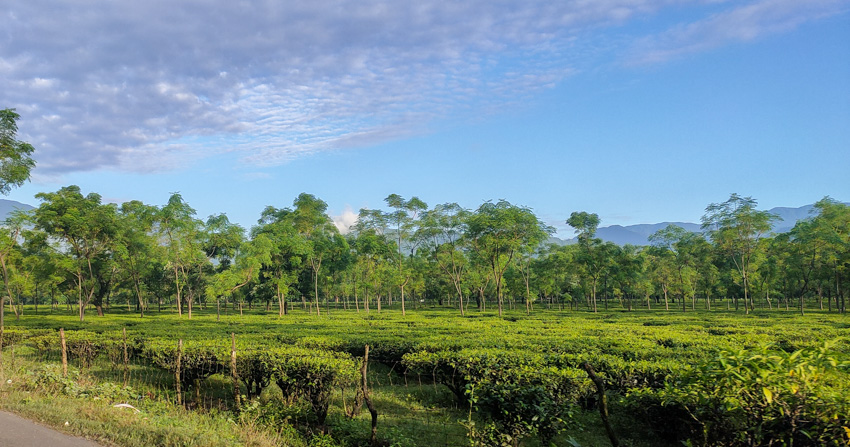
next day booked a Wizzride cab ( www.wizzride.com ) to Siliguri – Rs 650/- per person
started at 6am | time: 4 hrs 30 minutes to Siliguri | half the journey is through beautiful tea estates
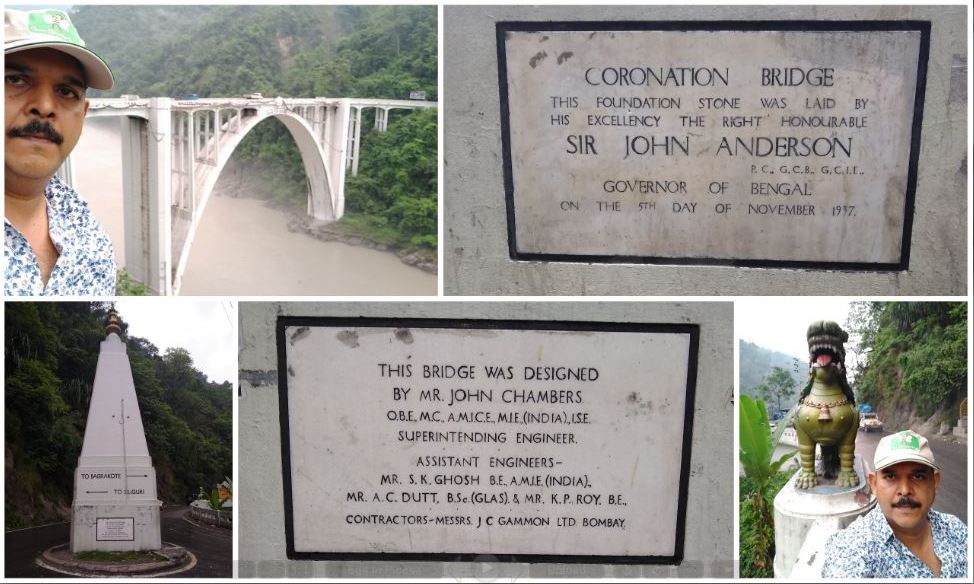
You can go directly to Gangtok (Sikkim) from Phuentsholing
once you cross the Coronation bridge, go right
Time approx 7 hours
Only option were shared Trax or Bolero taxis and they packed 8 passengers, although cheap, its very uncomfortable. Wizzride did not have direct taxis from Phuentsholing to Gangtok
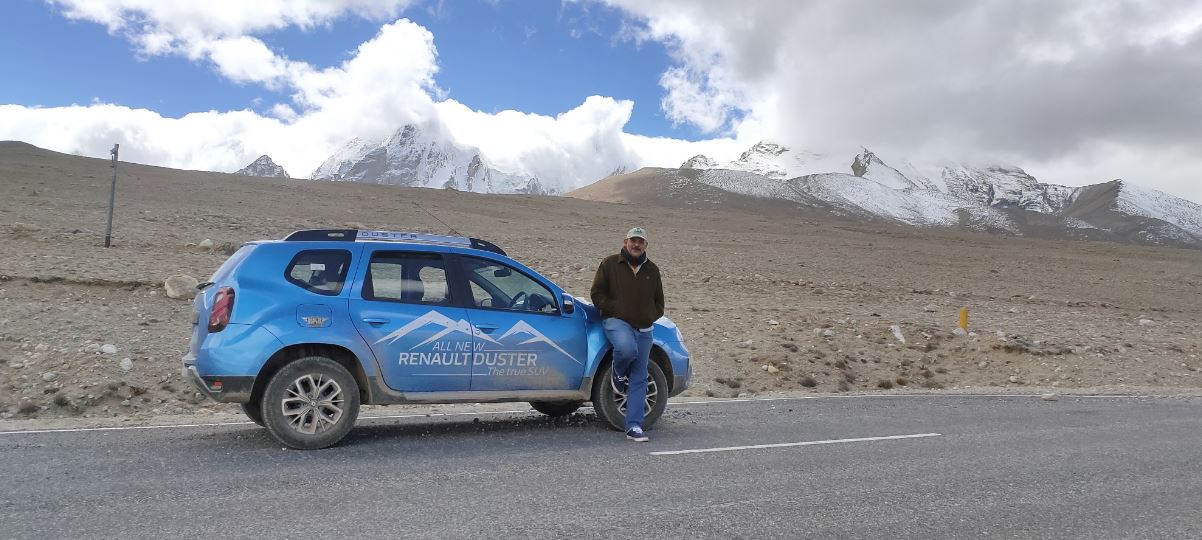
then drove friend’s car to Gangtok
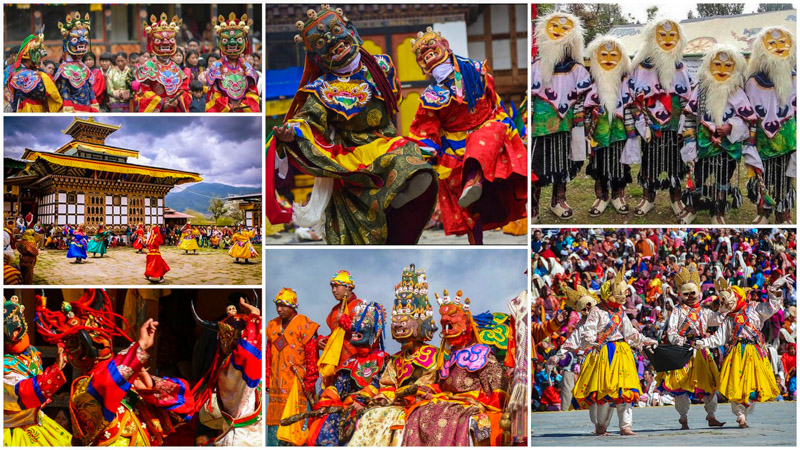
There are lots of local festivals that take place in Bhutan, check the dates when you are planning to go. I missed the Thimphu festival by a few days.
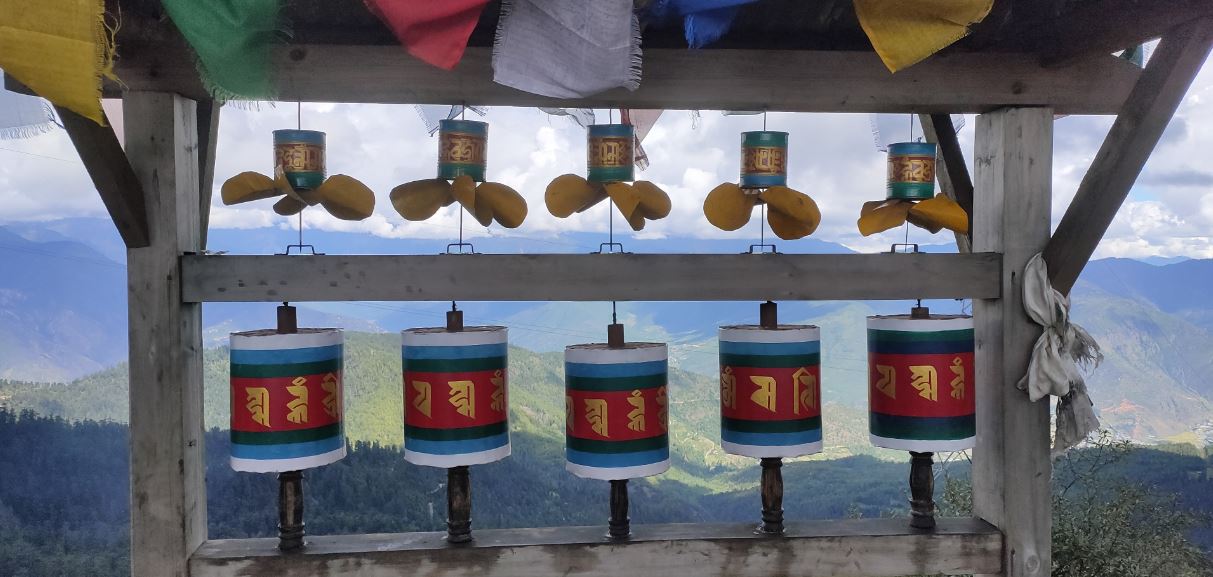
Couple of interesting conversations I had:
1. On the third day while having breakfast at the hotel in Paro the waitress asked where I was from, when told I’m from India, she would not believe, when asked why, she said most Indians she has served are very loud and boisterous.
2. When driving to Phuentsholing, when I told the driver I’m from Goa, he asked me if lots of DONS stay in Goa, guess where he got the notion …………. Bollywood movies
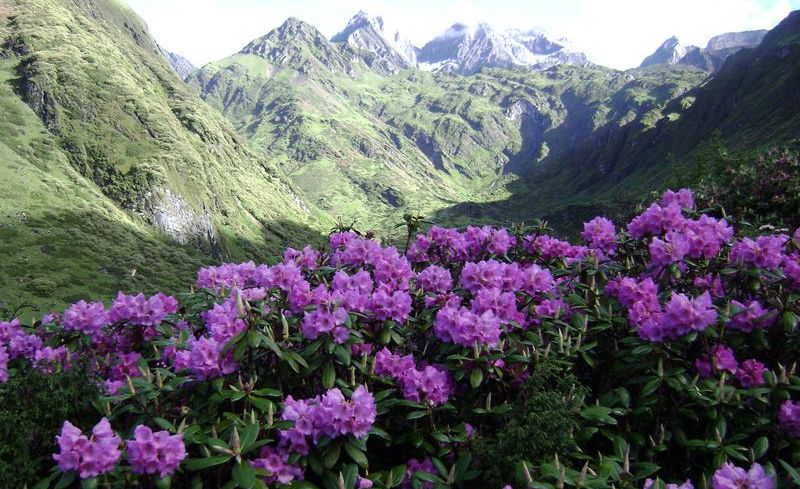
That’s all folks.
Hope you enjoyed the journey and once the virus pandemic ends, you are able to visit this beautiful country.

Lynn Barreto Miranda
p: 9822151419 | e: lynn@barretomiranda.com | w: lynn.barretomiranda.com
If you need any more information, feel free to contact me.
This presentation was put together and shared on the Let’s Travel whatsapp group during the all India lockdown in April 2020
Let’s Travel is a whatsapp group created by travel enthusiasts to share their travel stories and memories.
Its an open group, to join click the link: https://chat.whatsapp.com/ITeMEV5DQkr8SiPP7Wak5R
#travelstories #whatsappstories #letstravel

